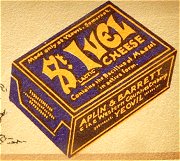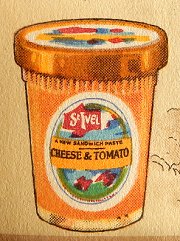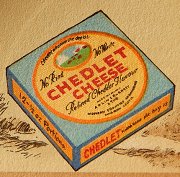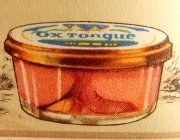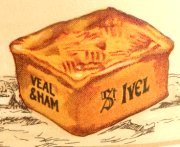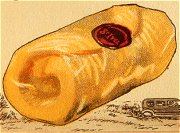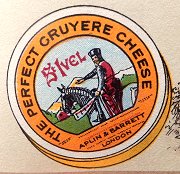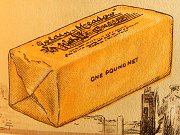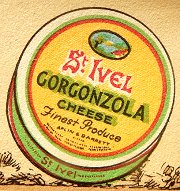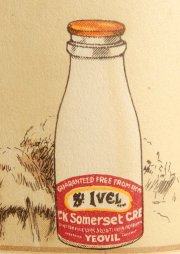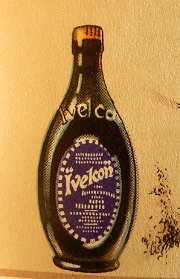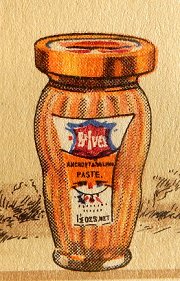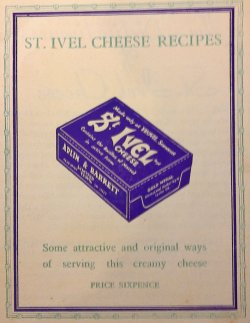Winter Exhibition 2023
Winter
Exhibition 2023
- presented by
Yeovil's Virtual
Museum
A Taste of Yeovil
A focus on Yeovil's heritage of food and drink in partnershipwith the Arts & Heritage Working Group's "Story of Yeovil" project.
Introduction
This exhibition
highlights much
of the tradition
of food and
drink in Yeovil
(albeit not much
in the way of
drinking, bearing
in mind the
September 2022
exhibition "Pubs
of Yeovil, Lost
Forever").
The exhibition concentrates on the story of food (and drink) in Yeovil. It is split into nine parts -
- Food Production - Farming, Small Scale Food Production, Aplin & Barrett
- Food Products - Mainly Aplin & Barrett products
- Liquid Refreshment - Cider, Ale, Soft Drinks
- Selling Food and Drink - Markets, Small and Corner Shops & Supermarkets
- Delivering Food and Drink - Hand Barrows, Horse-Drawn and Motor Vehicles
- Eating Out - Cafés and Restaurants
- Feeding Yeovil at War - Rationing? Grow Your Own
- Food-Related Advertising from the 1880s onwards
- Aplin & Barrett Recipes - Recipes using St Ivel Cheese
![]()
1. Food Production
Farming
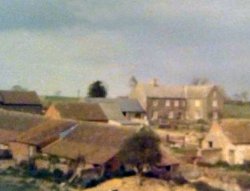 From
the Middle Ages
until relatively
modern times,
farming has been
one of the most
important
livelihoods in
the parish and
market town of
Yeovil and its
immediate
neighbourhood,
supplying the
bulk of the
town's food,
both animal and
vegetable.
Indeed, there
have been over
fifty
farms in the
parish, most
of which survive
today, although
many, like
Great
Lyde Farm
(at left)
have
disappeared.
From
the Middle Ages
until relatively
modern times,
farming has been
one of the most
important
livelihoods in
the parish and
market town of
Yeovil and its
immediate
neighbourhood,
supplying the
bulk of the
town's food,
both animal and
vegetable.
Indeed, there
have been over
fifty
farms in the
parish, most
of which survive
today, although
many, like
Great
Lyde Farm
(at left)
have
disappeared.
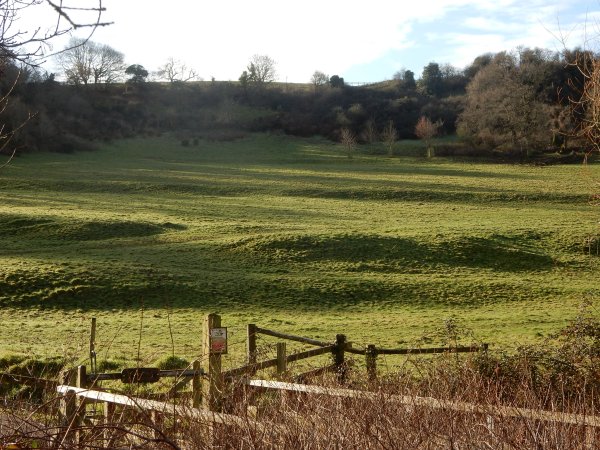
This photograph
features in my
book 'Secret Yeovil'.
Traces of medieval farming practices still exist today in the form of lynchets (from the Old English hlinc meaning 'ridges, terraces of sloping ground') on the lower slopes of Summerhouse Hill - showing as a series or flight of stepped terraces, visible on the now grassy hill-side.
A lynchet, also known as a strip lynchet, is a bank of earth that builds up on the downslope of a field ploughed over a long period of time where the disturbed soil slips down the hillside to create a lynchet. As such lynchets represent the legacy of ploughing, although not necessarily consciously created as a feature in themselves, though some initial construction may have been required on the steepest ground, the lynchets are the result of the repeated action of the plough's mould-board turning the loosened soil outwards and downwards; over time forming a level strip or tread for cultivation with a scarp slope (a 'riser') down to the next strip below. Reflecting the practical nature of their creation, they follow the contour lines of the natural slope.
![]()
Small Scale Food Production
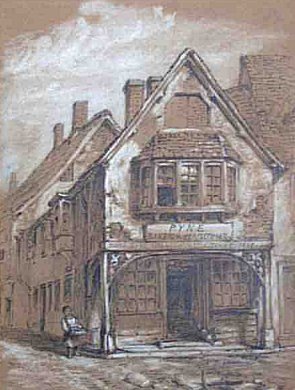 From my collection |
There have always been individuals who have learnt a trade and have then started their own businesses. The food industry is no different. At left, Under Bow was an old house, described as 'ancient' and 'typical of many former houses in the town' that stood in the Borough, on the corner of Grope Lane (now Wine Street). It possibly dated to the sixteenth century, if not earlier. In 1860, Under Bow was occupied by baker Charles Pyne and his family. Unfortunately, a bakehouse in such a timber structure was probably never a good idea and, in December 1861, a serious fire broke out in the bakehouse, destroying the building. |
Above is an original
pastel and
pencil sketch on
paper (255mm x
190mm) of
Charles Pyne's
establishment
'Under Bow',
showing part of
the
Wine Street
elevation at the
left. The sketch
is by artist
Walter Francis
Tiffin
(1819-1890) of
Salisbury,
Wiltshire -
although at the
time of this
sketch he was in
Sherborne. An
attached label
reads
"Sherborne, W
Tiffin, 1865"
and a second
label, in
pencil, reads
'By W F Tiffin'.
Although the
sketch is dated two years after
the building's
final
demolition,
this is
almost certainly a
worked-up
version of a
much earlier
sketch -
possibly dating
to the early
1850s.
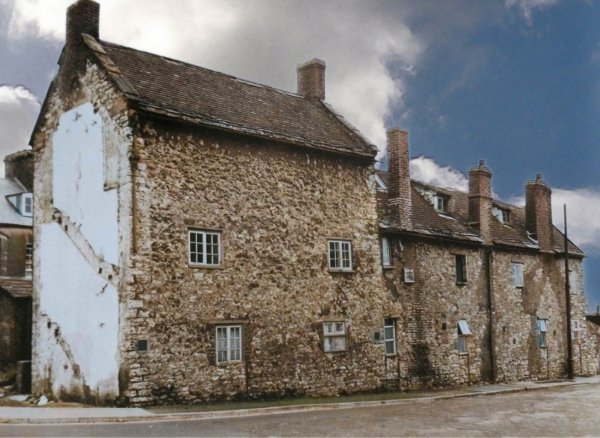
This colourised photograph
features in my
book 'Yeovil
From Old
Photographs'
In the days before refrigerators, meat was steeped in large vats of brine, or salt water, to preserve it. The salt-house, from where the name Salthouse Lane derives, is seen above at left with the cottages of Spring Gardens at right. Photographed after 1886 (after the corner section seen at the extreme left had been demolished) and seen from Huish, with Salthouse Lane running off to the right. The Spring Gardens cottages were demolished in 1955 and it is likely that the Salthouse was demolished at the same time.
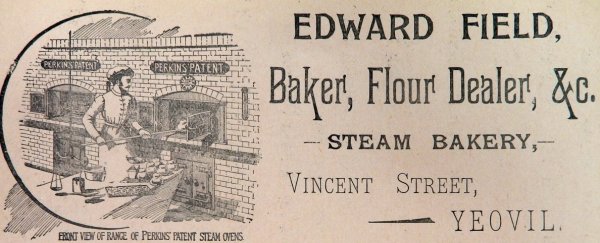
During the summer of 1895, Edward Field started his new bakery on the corner of Earle Street and Vincent Street. Above, is Edward's advertisement in the 1895 edition of Whitby's Yeovil Almanack Advertiser, featuring his Perkins' Patent Steam Ovens.
The Preston Bacon Factory (sadly, no photographs) was commercial premises built around 1905, off Preston Road, and now the site of Stratford Road. It was owned and run by Hedley Edward Haynes of the Yeovil Bacon Curing Company. The premises were built of brick and galvanised-iron, with the following facilities - a slaughterhouse; refrigerating, curing, lard and cooking rooms; stores; an office; an engine shed; stables for two horses and a cart shed. There was also an adjoining yard, an accommodation paddock and orchard land. The whole extending to an area of about 4½ acres.
The Bacon Factory, together with the Post Office and houses between the factory and Preston Road, were demolished by 1963 to make way for shops and a petrol filling station (now mostly occupied by a large block of flats) with Stratford Road behind. Much of the orchards and paddock are now mostly the playing fields of Preston School.
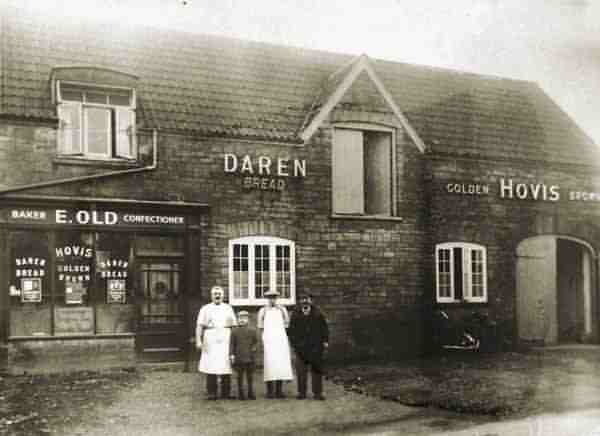
Old's bakery, opposite St James' church, Preston Plucknett, photographed around the 1920s. The building, albeit altered, survives today. Daren bread was a brown, but not wholemeal loaf such as Hovis, that was also baked at Old's bakery. Daren was once a well known style of bread with advertisements that emphasised the health benefits of this type of bread and also its suitability for invalids. It was a ‘germ’ bread, rich in wheat germ which increased the level of a number of vital nutrients such as vitamin E, folic acid and various trace elements, essential to health.
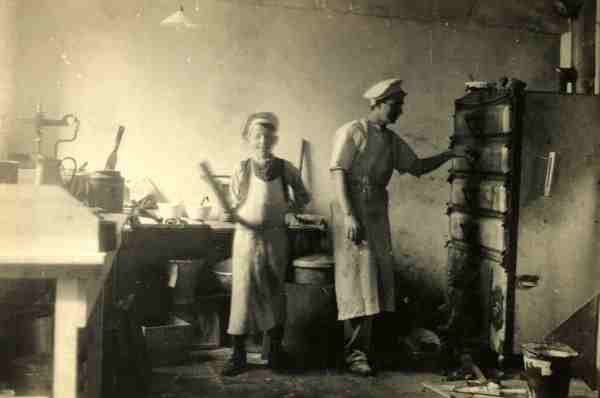
Courtesy of Bob
Banfield.
This
photograph
features in my
book "Lost Yeovil"
The bakery at the rear of the Cottage Café, photographed during the 1930s.
In 1928, William Frederick Banfield opened the Cottage Café in No 71 Hendford (see below). At the rear of the premises he built a bakery, seen in the photograph above. Famous for its bread, cakes, pastries and confectionary - and still remembered with fondness by many Yeovilians today - the business closed in 1972.
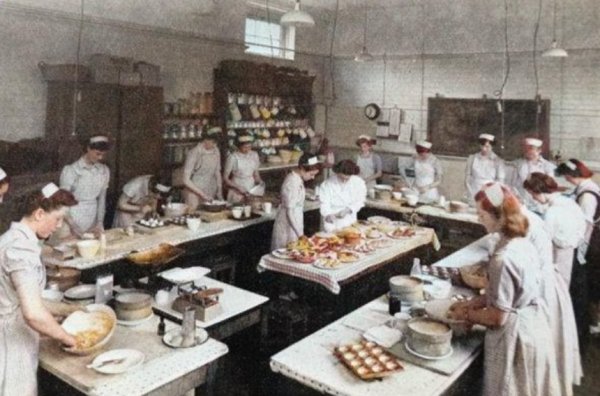
From my
collection.
This
colourised photograph
features in my
book "Lost Yeovil"
Start 'em young! This is the General Certificate cookery class of Yeovil High School for Girls, photographed in the spring of 1954. The Domestic Science room was complete with both gas and electric stoves and a Rayburn, so that the girls could learn all types of cooking.
![]()
The 1954 Explosion in the "Banana Factory"
The
following
report
on the
Earle
Street
explosion
is from
the
Dundee
Courier
and
Advertiser
of 12
December
1954.
Homes damaged by fruit store blast
The building is of brick and concrete, with an asbestos roof. It was shattered. Four lorries inside were half-buried in debris. A nine-inch brick wall was split from top to bottom. Mr George Banbury, the owner, escaped with slight head injuries. He could remember nothing about the incident. The explosion is believed to have occurred in the banana-ripening room. Mr Arthur P Male, Colmer Road, Yeovil, was taken to hospital with lacerations of the scalp and concussion. Throughout the day police, firemen and an army of workmen cleared away rubble. The four lorries were got clear, and street residents patched up broken windows. |
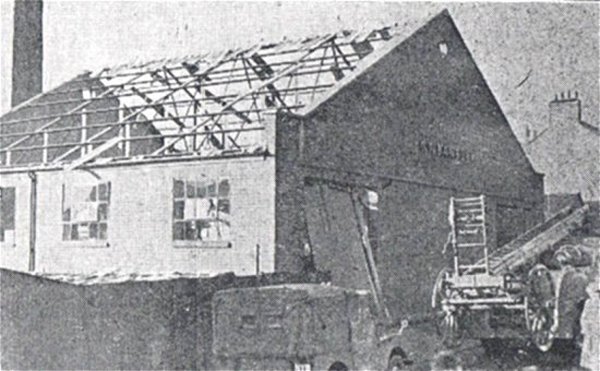
The damage to Banbury's banana-ripening facility in Earle Street.
![]()
Aplin & Barratt
In 1888, James Shorland Aplin and William Henry Barrett merged their wholesale dairy businesses together for the purpose of creating and marketing cheese, cream and butter. Around the turn of the century Aplin & Barrett acquired some two acres of land on the eastern side of Newton Road, near its junction with Middle Street, that had been the extensive grounds of Osborne House. The decision to purchase was undoubtedly enticed by the close proximity of Yeovil Town Railway Station and its associated goods yard at the heart of a potential national distribution system for their products. The famous St Ivel brand was born in 1901 and applied to a range of their products, even though there is no saint of that name.
Extending their range to include not only cream, various cheeses and cheese spreads, but also a large range of potted pastes, puddings, pies and sausages, Aplin & Barrett grew to be the Yeovil's largest food producer.
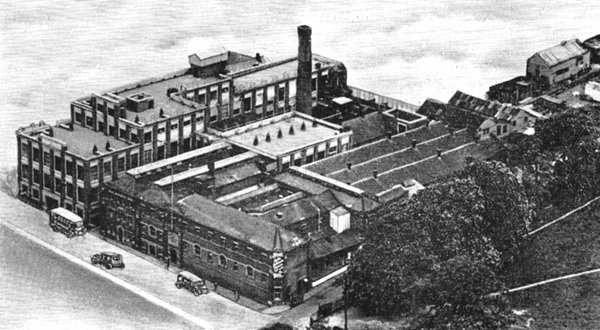
From my
collection
An artist's impression of the Aplin & Barrett factory in the 1950 Yeovil Guide.
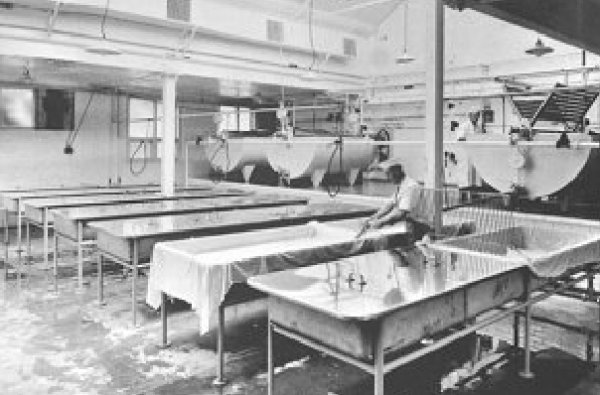
The cheese-making room at the Aplin & Barrett premises.
The following photographs are from an article from 'Food' Magazine' of May 1936. The article was reproduced as a separate publication by Aplin & Barrett, entitled "The Manufacture of Meat and Fish Pastes".

From my
collection.
This
photograph
features in my
book "Lost Yeovil"
The preparing room, where raw materials are weighed out, passed twice through mincing machines and through a battery of Premier mills (on the left).

From my
collection.
This
photograph
features in my
book "Lost Yeovil"
The filling room. Girls are seen filling the paste into glasses, preparing the tops in several stages, and seaming the caps. Finally, the pots pass to the girls on the right, who place them in wire baskets.
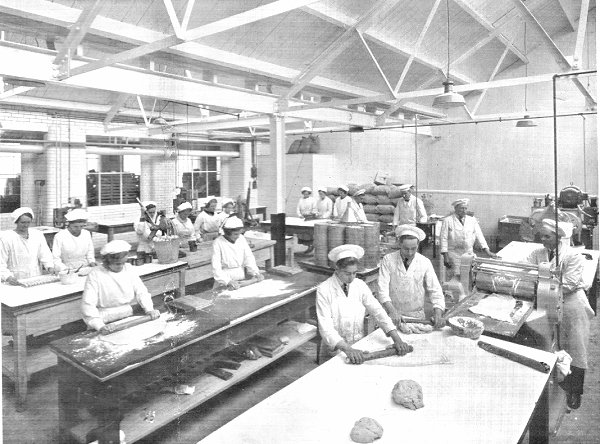
From my
collection.
This
photograph
features in my
book "Lost Yeovil"
The pie room, with the dough mixer and pastry-brake on right.
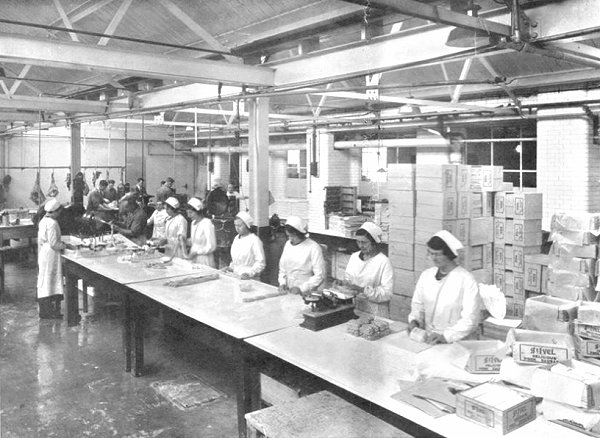
From my
collection.
This
photograph
features in my
book "Lost Yeovil"
The sausage room, showing filling operations (left), followed by linking, weighing and boxing.
![]()
2. Food Products
(mainly, of course, Aplin & Barrett products)
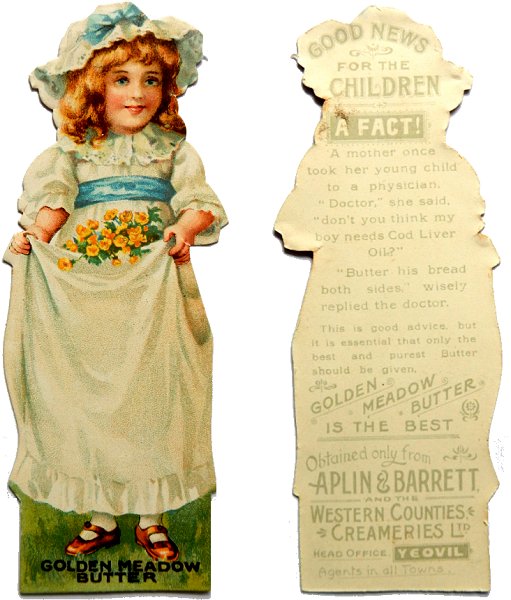
From my
collection
Above, are both sides of a cardboard cut-out advertising bookmark for Aplin & Barrett's "Golden Meadow Butter" from around 1895.
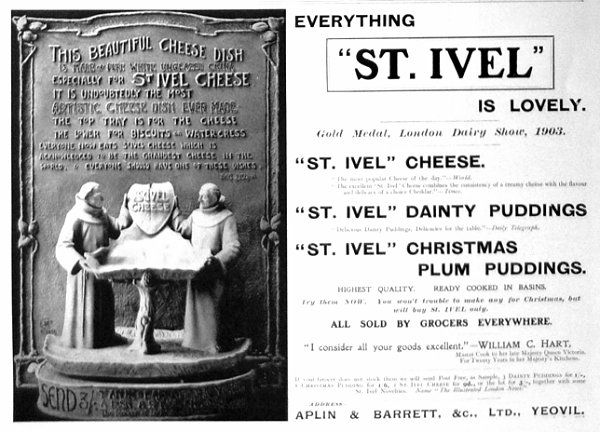
An early 'St Ivel' products advertisement, from a 1903 edition of the London Illustrated News.
In the 1930s Aplin & Barrett published a book of tours of the West Country - 'The Call of the West'. Each page featured a small advertisement (see below) for one of their products.
|
|
|
|
|
|
|
|
|
|
|
|
|
|
|
|
From my collection
Product advertisements from the pages of the 1930's 'The Call of the West' tour guide. All are enlarged from the original size.
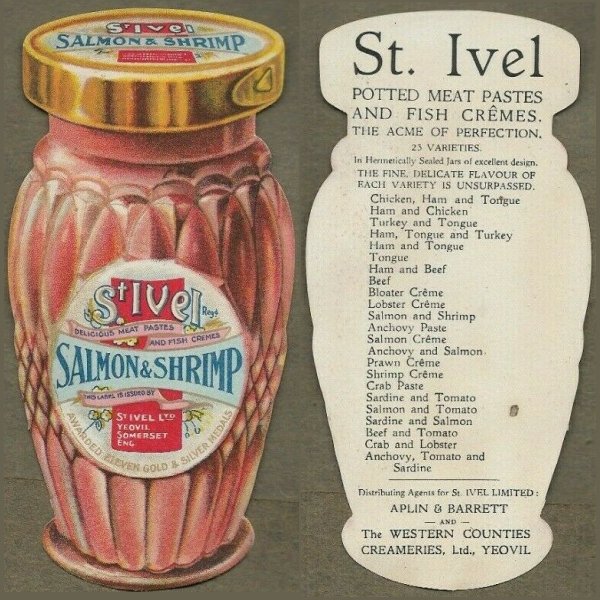
Both sides of a cardboard advertising cut-out for Aplin & Barrett's range of 23 potted meat and fish pastes - probably from the inter-war years.
Below, are a range of Aplin & Barrett's "St Ivel" brand cheese spread products; large round pack labels and small triangular portion labels. The crustless cheddar loaf is probably the oldest, dating back to the 1920s, followed by the 1930s' Gruyere label featuring the mythical St Ivel and, finally, the cheese and ham spread pack label from the 1950s.
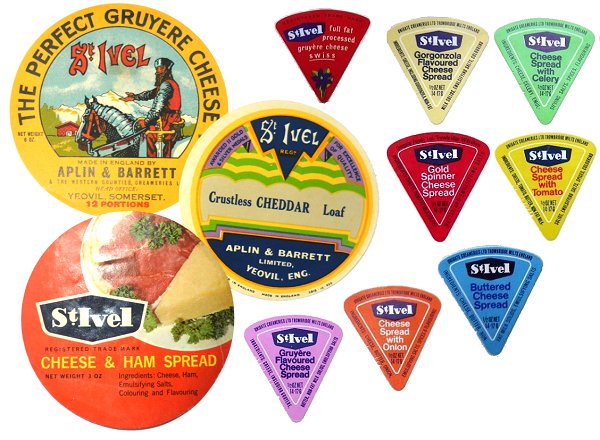
From my
collection
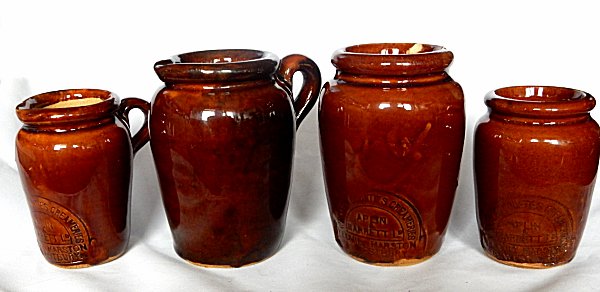
From my
collection
Aplin & Barrett treacle-glazed stoneware cream jugs and pots.
'Ivelcon' was a beef extract beverage usually sold in cube form, but also available in small bottles (see below) containing concentrated liquid form. The name of the product combines the name of the brand, 'St Ivel' with the word ‘consommé’.
Before the Great War, when the product was comparatively new, Aplin & Barrett's advertisers worked a scheme of house-to-house sampling of their Ivelcon beef extract beverage, with demonstrations. The canvasser asked for hot water and prepared a sample cup if Ivelcon beef-tea for the householder in anticipation of a sales order.
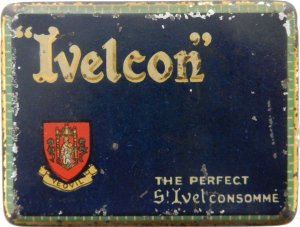 From my collection |
At left is a small tin (2¾" x 2" x ¾" - 65mm x 50mm x 20mm) that held twelve individual portions of 'Ivelcon' beef consommé. This was sent to troops serving in the Great War. Ivelcon, also sold in concentrated liquid form in small bottles, was promoted as a healthy, warming and strength-building drink or tasty cooking supplement. The product was widely advertised, and Ivelcon continued to be advertised well into the 20th Century. |
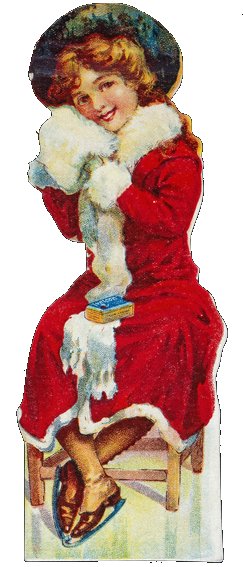 |
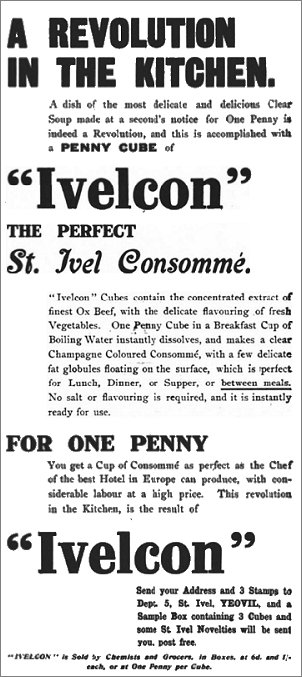 |
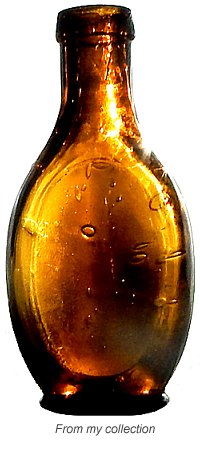 Above
left
is a
Christmas
advertisment
from
around
1910
- a
cardboard
bookmark.
The
prettily
posed
skater
with
the
product
on
her
lap
is
selling
'Ivelcon’.
The
back
of
the
bookmark
describes
Ivelcon
as
“an
absolutely
pure
Food
Beverage,
containing
the
concentrated
essence
of
Prime
Beef
and
Fresh
Vegetables”.
Above
right
is
one
of
the
very
first
advertisements
for
'Ivelcon'
from
the
21
September
1908
issue
of
the
London
Daily
News.
Above
left
is a
Christmas
advertisment
from
around
1910
- a
cardboard
bookmark.
The
prettily
posed
skater
with
the
product
on
her
lap
is
selling
'Ivelcon’.
The
back
of
the
bookmark
describes
Ivelcon
as
“an
absolutely
pure
Food
Beverage,
containing
the
concentrated
essence
of
Prime
Beef
and
Fresh
Vegetables”.
Above
right
is
one
of
the
very
first
advertisements
for
'Ivelcon'
from
the
21
September
1908
issue
of
the
London
Daily
News.
Promoted as healthy, warming and strength-building drinks or tasty cooking supplements, these products were widely advertised. Ivelcon continued to be advertised well into the 20th Century.
In 1918, the advert above from the Illustrated London News promoted the cube’s benefits: “It’s all in the Cube! Drink a cupful of Ivelcon just before going to bed. You will not only find it sufficient as a light meal to carry you over until the morning, but it will bring refreshing sleep”.
In December 1866, William Maynard moved his established, family run business making pastries and confectionery and dealing in wines, to a new building in the Borough, actually built on the ruins of Under Bow, above. Maynard's son, William Tanner Maynard, was helping to run the business, and in the 1881 census the 28-year old William described his occupation as "Confectioner, Sausage Maker and Wine & Spirit Merchant employing 2 men and 2 boys". Indeed, Maynard & Son, "Purveyors to Her Majesty the Queen", were renowned for their "Prize Medal Royal Yeovil Sausages".
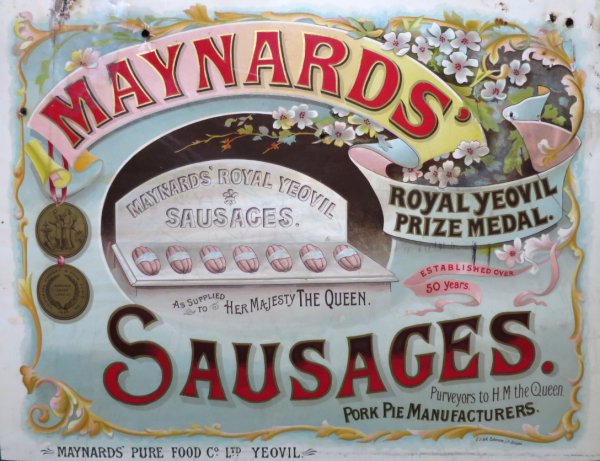
Courtesy of
Simon Laney
Above is a gelatin-covered paper showcard for Maynards' "Royal Yeovil Prize Medal Sausages". Since it claims the business to be "Established over 50 Years", the date would be around the 1890s. It measures 24.5" x 20" (625mm x 510mm) - the damaged edges have been cropped in this photograph, but the image remains complete.
![]()
3. Liquid Refreshment
Somerset Cider
The Yeovil hinterland has always been admirably suited to the three main types of farming in the UK; dairy farming, livestock farming and arable farming. A fourth type really ought to be mentioned as its importance has not declined through the centuries - the growing of apples and the production of cider.
Cider was brought to Britain by the Romans and production has been recorded at least as early as the eleventh-century. With Somerset being one of the biggest cider counties in England, the West Country is known for the traditional method of cider making, using original, sharper types of cider apples.
In the Yeovil town area, as seen from the map below, a substantial acreage was originally devoted to orchards. In the parish as a whole (which consisted of 3,530 acres), 227 acres, or 6.5%, spread across more than a hundred orchards, were devoted to growing cider apples.
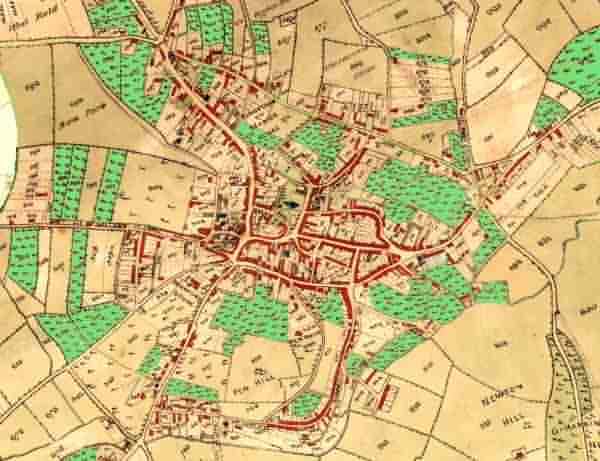
Orchards, coloured green, superimposed on the 1846 Tithe Map. Most of these orchards are now built on.
The low wages being paid at this time, especially in the surrounding countryside, were usually augmented by an allowance of cider. For example, a labourer received one shilling a day in winter 'with cider' and one shilling and fourpence 'with cider' in summer. The latter amount was also paid for mowing grass per acre plus one gallon of cider, while reaping wheat was paid for with four shillings per acre and two and a half gallons of cider.
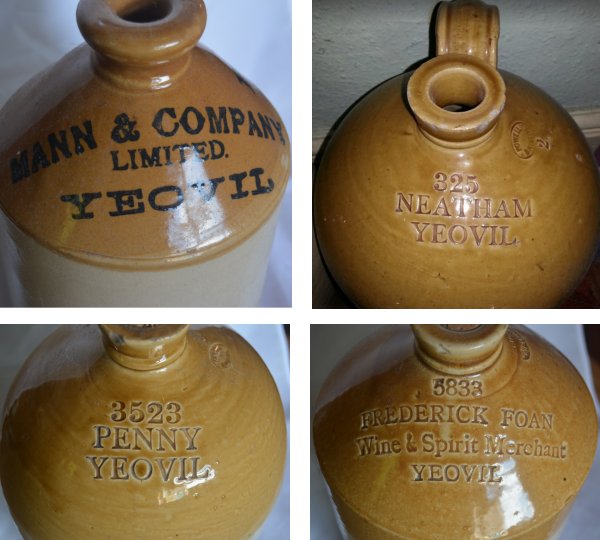
Local cider was sold by retailers in these one-gallon jugs.
In order to combat a very real national rise in drunkenness, especially amongst the poor, the government enacted the Beerhouse Act 1830. This was seen as an attempt to wean the population off spirits (especially Dutch gin, which at this time was roughly one penny for a pint of gin), by actively liberalising the regulations and increasing competition in brewing and the sale of beer and, especially in Yeovil, cider. According to the Act, it was considered "expedient for the better supplying the public with Beer in England, to give greater facilities for the sale thereof, than was then afforded by licenses to keepers of Inns, Alehouses, and Victualing Houses."
Under the Beerhouse Act 1830, any householder who paid rates could apply for a license to sell beer or cider and set up a so-called beerhouse, usually in his own home. The license would also allow him to brew his own beer or cider on his premises, although most bought their ale from local brewers. The license cost a one-off payment of two guineas - £2.10 in today’s money but about £160 in today’s value. From 1830, until the turn of the century (and bearing in mind that Victorian Yeovil was only a fraction of the size of today's town), Yeovil had over 100 beerhouses and rarely fewer than forty at any one time. This was in addition to an equally large number of inns, taverns and other types of hostelry. It is assumed that the quality and flavour of such home-made brews was 'variable' to say the least.
![]()
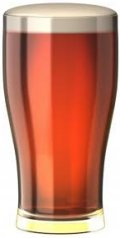 Yeovil
Breweries
Yeovil
Breweries
Brewing, of
course, is
thousands of
years old and in
the past Yeovil
had its fair
share of brewers,
albeit
invariably
unrecorded.
Samuel Kitson (1730-1782) was a maltster like his father. He founded the Yeovil Old Brewery in Hendford (the site is now occupied by the Masonic Hall).
The Yeovil Old Brewery was later described as "... most desirably situate in Hendford, in the town of Yeovil, together with the commodious dwelling-house and extensive garden adjoining... The Trade Premises comprise a good 10-quarter Malthouse and Brewery, well supplied with water, extensive Cellarage, Stable, Loft, Waggon-house, Counting-house and Outbuildings."
In 1824, Thomas Cave (1781-1863) established a brewery in Clarence Street (actually behind his house in Princes Street). The company originally started life as Kitson & Cave (with Samuel Kitson, above) which was listed in Pigot's Directory of 1824. Thomas left the partnership in 1830, at which time Pigot's Directory listed Thomas Cave as a 'Brewer & Maltster of Hendford' in his own right (although called Hendford, it actually included the western side of today's Princes Street as far as Park Road). In 1854, Thomas entered into a business partnership with Joseph Brutton (1831-1914), the company became known as Cave & Brutton. Thomas Cave died, aged 76, in 1863. Joseph Brutton continued with the brewery, which became known as Brutton's Brewery. Joseph retired due to ill-health in 1893 and died in 1914.
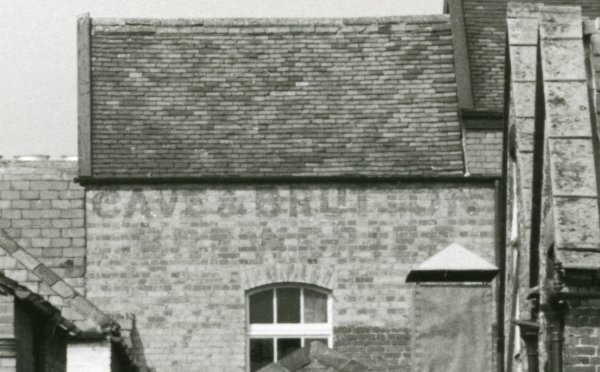
"Cave & Brutton Breweries" painted on the side of one of the early brewery buildings - this must have been painted between 1854 (when the partnership started) and 1863 (when Thomas Cave died), thereby giving a 'latest' date for this particular building. Photographed in the 1960s.
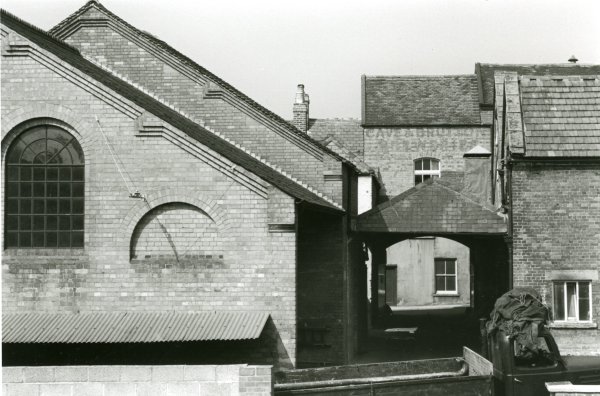
Again, photographed in the 1960s and seen from a bit further away, this view shows some of the original brewery buildings.
After Joseph Brutton's death, his sons carried on the business and significant improvements to the brewery were recorded in 1893 after Joseph's retirement. The business was listed as Brutton & Sons Ltd. Mitchell, Toms & Co Ltd of Chard became associated with Joseph Brutton & Sons Ltd around 1935 and took over Brutton's in 1937. The company was renamed Brutton, Mitchell & Toms Ltd. The Chard brewery closed in June 1937 and all brewing was concentrated in Yeovil. The company acquired Dorsetshire Brewery (Sherborne) Ltd. of Long Street, Sherborne in 1951, along with 78 licensed houses and three off-licenses. From this date the Dorsetshire Brewery ceased to brew. The company was taken over by Charrington & Co Ltd, London, in 1960 and changed its name to Charrington & Co (South West) Ltd in 1963. The Yeovil Brewery ceased to brew in 1965.
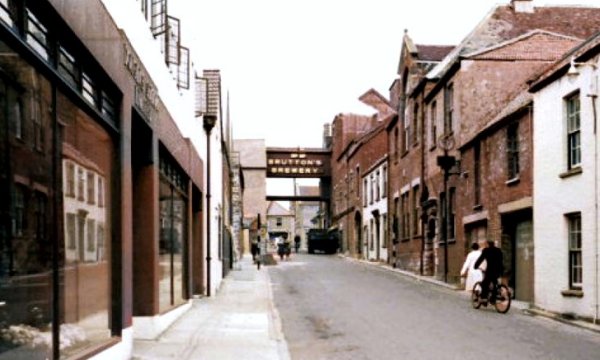
Looking north along Clarence Street in the mid-1960s. With the brewery on the right had side of the road and the malthouse on the left, the high-level covered bridge allowed staff to easily get from one site to the other.
The later Royal Osborne Brewery was in Sherborne Road and also had an aerated water works at the rear of the premises (see below). Its location was next to Osborne House and is currently the site of a car park. Finally it ought to be remembered that breweries outside Yeovil also supplied the town's pubs - the Limington Brewery in Ilchester, Crewkerne United Breweries (with a store at 12 Princes Street, Yeovil), The Dorsetshire Brewery Company in Sherborne and Berryman, Burnell & Co's Charlton Brewery at Shepton Mallet (with offices and stores in Court Ash, Yeovil).
Most recently, the Yeovil Ales Brewery was founded in October 2005, by father and son, Dave and Rob Sherwood. Yeovil Ales began brewing in May 2006, initially cuckoo brewing at the Triple fff brewery at Alton, Hampshire. Brewing in Yeovil started later that year. Their range of handcrafted beers included real ales and a growing number of occasional and seasonal brews - including their YOLO (You Only Live Once) series of 10th anniversary beers and their 'Hop' experimental British hop development ranges. Their team's enthusiasm and passion for quality, service and developing innovative new brews, led to a host of local and national awards. The Yeovil Ales Brewery closed on 21 June 2022.
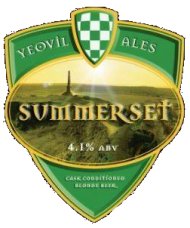 Summerset Blonde / Golden Ale Introduced 2007 |
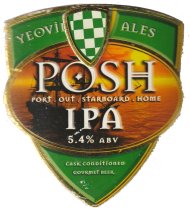 POSH (Port Out, Starboard Home) Bitter - Premium / Strong Introduced 2009 |
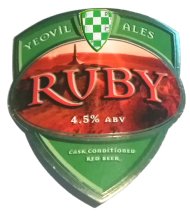 Ruby Ordinary / Best Red Bitter Introduced 2009 |
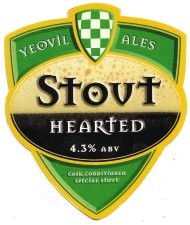 Stout Hearted Stout Introduced 2010 |
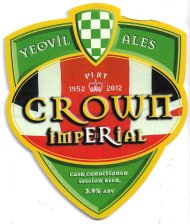 Crown Imperial Ordinary / Best Bitter Introduced 2012 |
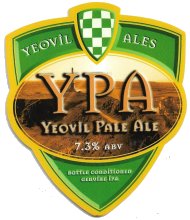 Yeovil Pale Ale IPA Introduced 2013 |
A small selection of Yeovil Ales' pump clips. During its relatively short production period, the Yeovil Ales Brewery produced 49 different ales.
As a sidenote, Yeovil's Beer Street was not named after the brew, but was named by the builder after himself - Levi Beer.
![]()
Aerated Mineral Waters and Soft Drinks
|
|
|
The Yeovil Mineral and Aerated Water Works Company Limited was launched in the summer of 1875 (although 'Works' was soon dropped from the company's title) with a capital of £3,000 (in excess of £2 million at today's value) and shares priced at £10 each. Even though the works were relatively small, the product range was impressive and included seltzer and soda water, lemonade, ginger beer, ginger ale, American ginger ale, hop ale, 'celebrated' orange champagne, sparkling lime juice, tonic beverage and phosphide (no, I don't know what phosphide is in this context either). The offices and bottling factory were at 10 Union Street, although the building is no longer there .In 1872, British soft drink maker Hiram Codd of Camberwell, London, designed and patented a bottle designed specifically for carbonated drinks and used by the Yeovil Mineral and Aerated Water Company (see left). The Codd-neck bottle was designed and manufactured to enclose a marble and a rubber or leather washer/gasket in the neck. The bottles are filled upside down, and pressure of the gas in the bottle forced the marble against the washer, sealing in the carbonation. The bottle was pinched into a special shape, as can be seen in the photograph at left, to provide a chamber into which the marble was pushed to open the bottle. This prevented the marble from blocking the neck as the drink was poured. Soon after its introduction, the bottle became extremely popular with the soft drinks industry. |
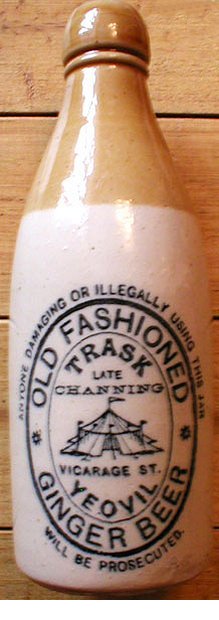 Henry Trask
& Son's mineral
water
manufactory was
located
immediately next
door to the
gasworks and was
demolished in
1894. The
site was used to
build the
Liberal Club,
erected in 1895.
From this time
onwards the
family-run
aerated water
business moved
to
Vicarage
Street, near
Quidham Place,
taking over the
Channing bottled
water works.
Henry Trask
& Son's mineral
water
manufactory was
located
immediately next
door to the
gasworks and was
demolished in
1894. The
site was used to
build the
Liberal Club,
erected in 1895.
From this time
onwards the
family-run
aerated water
business moved
to
Vicarage
Street, near
Quidham Place,
taking over the
Channing bottled
water works.
Henry's range of products on offer is interesting; in addition to their aerated mineral water, they produced ginger beer, ginger ale, lemonade, lemon squash, cream strawberry, raspberry, champagne cider and aerated lime juice & soda. Zolakone, hyped as being "worthy of everyone's attention", was a concentrated essence produced and supplied by Clayton & Jowett (essence manufacturers of Liverpool) and purchased by many UK mineral water manufacturers to be made up into drinks by them. 'Orange Kola' seems to be another bought-in essence - this time manufactured by ‘Orana', which was ‘prepared' by Trask's. The days when a mineral water manufacturer would brew their own ginger beer and produce their own flavourings quickly disappeared in the first years of the 20th century and most manufacturers came to rely on essences, or flavours, which became the basis of most drinks produced, but of course each local manufacturer had their own secret recipes and additional ingredients for creating their own specific drinks.

A range of Trask's bottle labels.
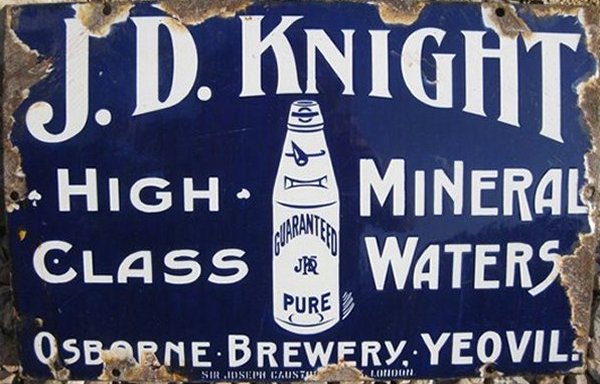
An enamel sign dating to between 1894 and 1906 - the period that Jonathan Drew Knight, brewer of Shepton Mallet, owned the Royal Osborne Brewery (see above) on Sherborne Road as well as some eighteen tied houses. Knight lived in Frome, but ran the Royal Osborne Brewery and the associated aerated mineral water works through a manager.
![]()
4. Selling Food and Drink
People have always needed to buy food and drink, and there have always been those ready to sell it to them. This section uncovers the development of food sales through the centuries.
Markets
The
market was a
trading
institution
usually held
weekly and
vitally
important for
the financial
stability of an
early town or
borough. Yeovil,
as most places
in medieval
England, has
traditionally
held a weekly
market. The
antiquary John
Leland, in 1540,
called Yeovil a
"good market
town" and the
market was
traditionally
held in the
Borough and
adjoining
streets. In 1791
Collinson wrote
"The market here
is kept on
Friday, and is
very large for
corn, cattle,
and pigs; for
bacon, cheese,
butter, flax,
and hemp."
Many Yeovil streets once had names that reflected the business transacted there: the northern end of Hendford was known as Hog Market, Princes Street was once called Cattle Market, Silver Street, from the Borough as far as Vicarage Street, was often referred to as Corn-Market. In the early part of the nineteenth century Market Street was known as Rotten Row, so called because horses were paraded there for prospective buyers to inspect, especially at the time of fairs. Rotten Row was named after the famous broad track of the same name in Hyde Park, London, which is still reserved for the exercise of horses.
In the eighteenth century the Borough contained two buildings, the Shambles used by butcher's and sometimes called the Butcher's Shambles, and the Market House for the benefit of other market traders. Later, buildings were constructed behind the Town Hall in High Street that included a meat market, cheese market and corn exchange. Indeed the open frontage at ground floor level of the Town Hall itself was given over to market stall traders (although this was later converted to shops). The Shambles and Market House in the Borough were demolished in 1849.
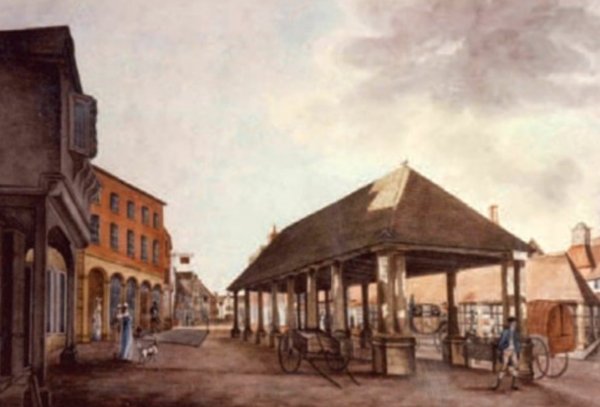
A painting made in 1810, of the Borough looking towards High Street which runs to the distance at left. The building at centre was the Market House, built in 1740, and behind it to the right was the butcher's Shambles, built in 1803. The building at the extreme left is 'Under Bow' (see above) and next to it is the only building to survive today in the Borough from this period and today is the premises of Superdrug.
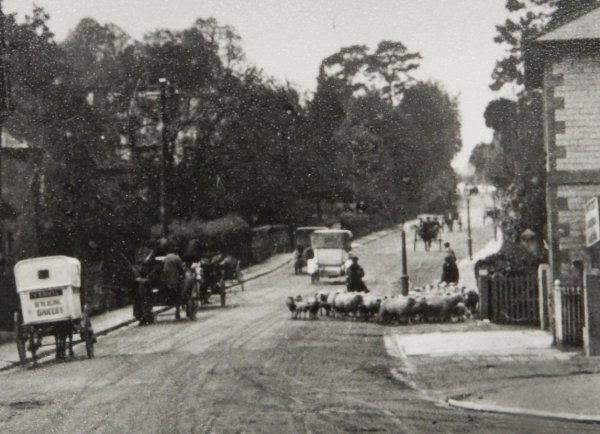
Hendford Hill seen around 1920, with a horse-drawn baker's delivery van outside the Hendford Supply Stores. The photograph was clearly taken on a market day since, at right, a small flock of sheep is being taken to market.
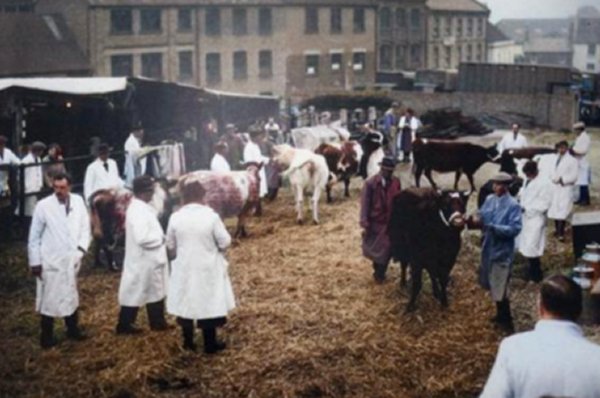
Yeovil cattle market on what is now the car park between North Lane and Court Ash. Probably in the 1950s or '60s.
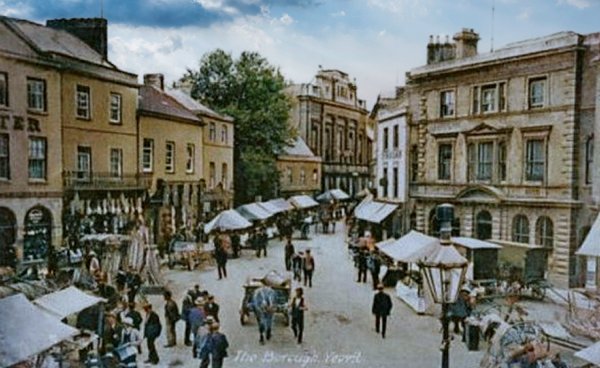
From my
collection. This
colourised photograph
features in my
book 'Secret Yeovil'.
A postcard of about 1905 (this one was posted in 1911) showing the weekly market in the Borough.

The bustle of the Petters Way Friday market, photographed in the 1990s.
Small and 'Corner' Shops
The 'corner shop' was often the focal point for a small local community, such as a street. During the first half of the twentieth century, Yeovil had around seventy corner shops. Below are just a few examples of small, usually single-trader, shops and 'corner' shops.
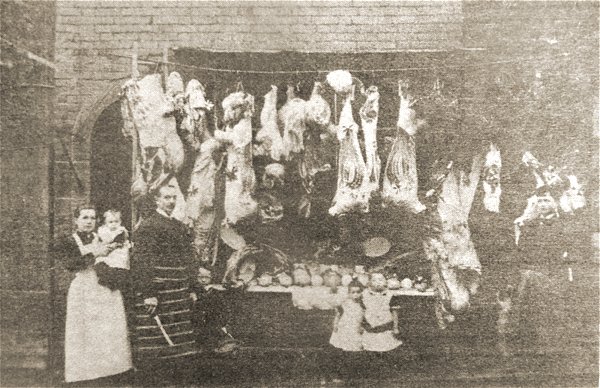
This photograph dates to December 1894 and shows Joe Rousell, his wife Jane and their young family together with a butcher's assistant outside their home and butcher's shop premises near the end of Wellington Street.
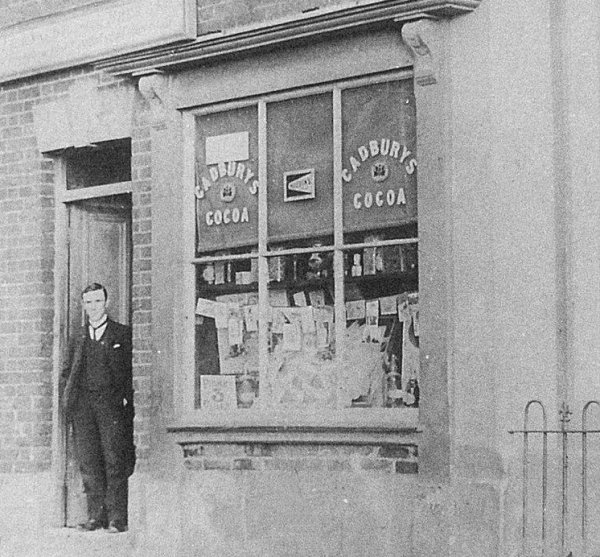
Charles Lane, photographed around 1900, standing in the doorway of his general grocery shop at 67 Queen Street.
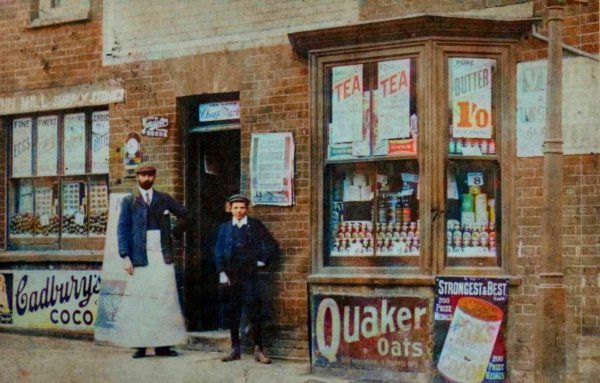
The Pen Mill Supply Stores, in a colourised photograph of around 1905. This shop is believed to have been on the corner of St Michaels Avenue and Great Western Terrace.
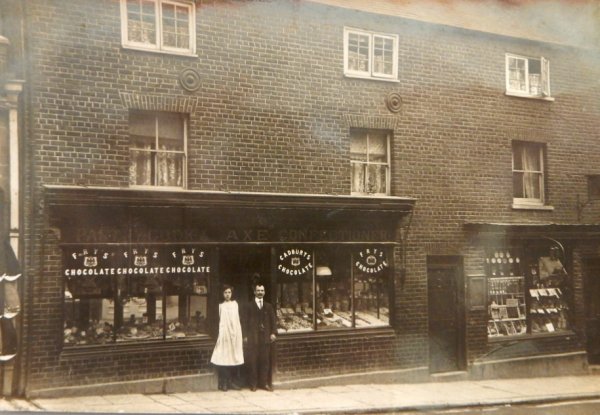
Courtesy of Jack
Sweet
Baker, confectioner and shopkeeper, George Axe and his daughter Lily, standing by their shop at 22 Middle Street in 1907. At right is the home and shop premises of watch & clock maker Frederick J Hicks at 22a Middle Street.
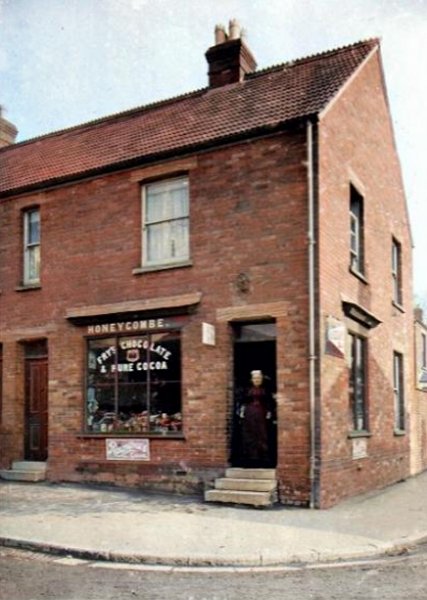
Courtesy of
Chris Symes
William and Eliza Honeycombe's general grocery shop at 61 West Hendford on the corner of Manor Road. That is Eliza's mother, Sarah Ann Bowden, née Moors, in the doorway above, in a colourised photograph of around 1905.
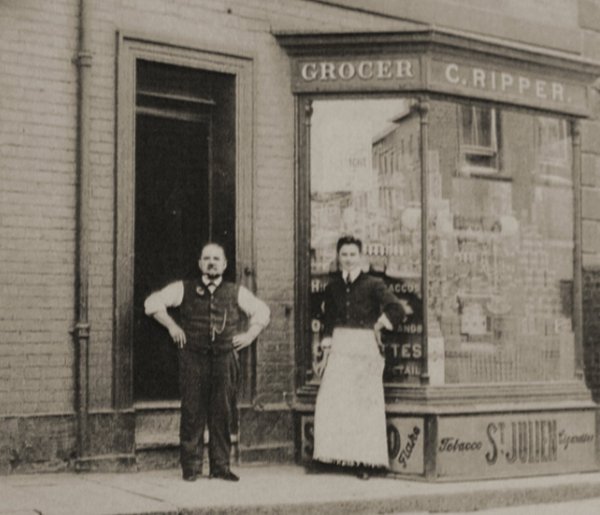
Charles Ripper and his assistant stand outside Ripper's grocery shop in Lower Middle Street, on the south side about halfway between Newton Road and Station Road, where he was to run his grocery business for over thirty years or so. The premises is now a tanning salon.
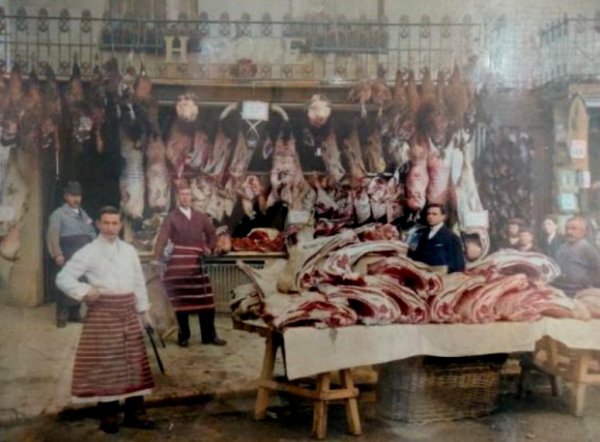
This
colourised photograph
features in my
book "Lost Yeovil"
This photograph, taken around 1910 before Health & Safety had been thought of, is of Hayne's butcher's shop in the Borough (literally) - the shop was in the white building behind the War Memorial, between the Borough and the churchyard. Hayne's moved to their current premises (below) at the very northern end of Princes Street in 1939, where it remains today.
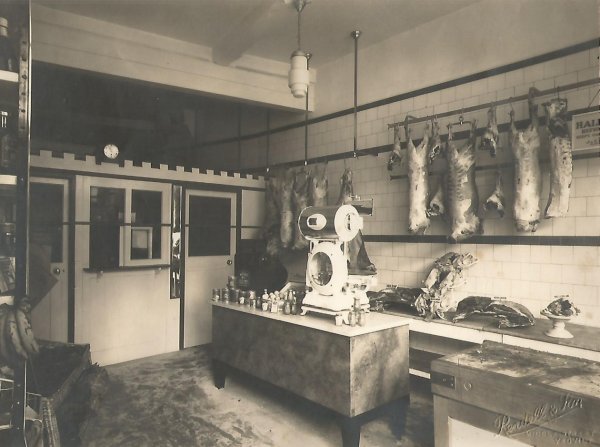
A photograph by Walter Rendell of Hayne's butcher's shop in Princes Street after Sidney moved from the Borough in 1939. Today the shop is completely recogniseable although there are no dead animals adorning the walls or counter tops.
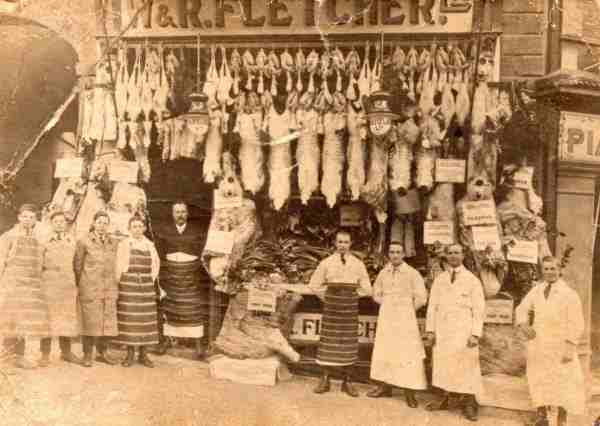
This photo also dates to around 1910 and shows Fletcher's the butchers, of the Triangle, in the building immediately next door to the Coronation Hotel (at extreme right is the edge of Godfrey's piano store set into the ground floor of the Coronation). W & R Fletcher Ltd, was a New Zealand company with freezing works in Australia as well. They were sending mutton and lamb to the UK in the 1880s and opened cold stores to wholesale butchers. By 1910 they had 417 shops, mainly in the south of England. Union Cold Storage bought them out in 1912 and used the name W&R Fletcher until the 1960s in Yeovil. In 1922 UCS bought a small company of seven shops and a market stall trading as J H Dewhurst. They later traded in Princes Street, on the corner of Church Street. The company went into liquidation in 1995.
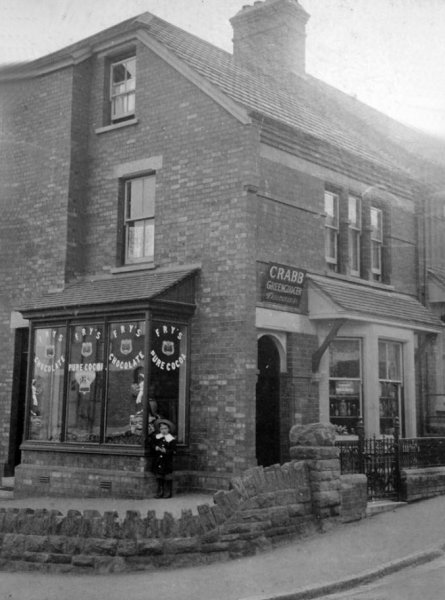
Courtesy of
Katie Clements
Seen here around 1910, this is the greengrocery and general grocery of Albert Crabb, on the corner of Goldcroft and Crofton Park. By the time of the Second World War it was run by his son Gilbert Frances Crabb. Today it remains as a corner shop - the Crofton Stores.
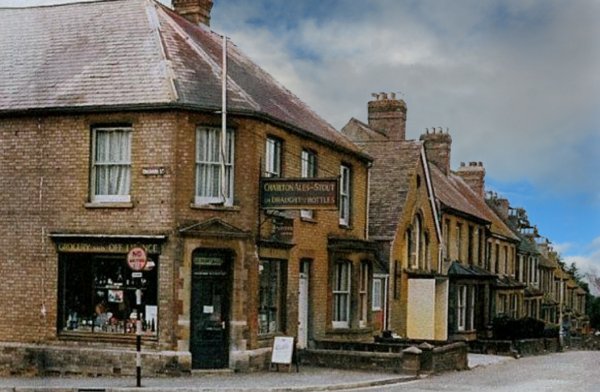
This colourised photograph
dates to about
1955 and shows
Montague's
corner shop on
the corner of
Huish and
Orchard Street.
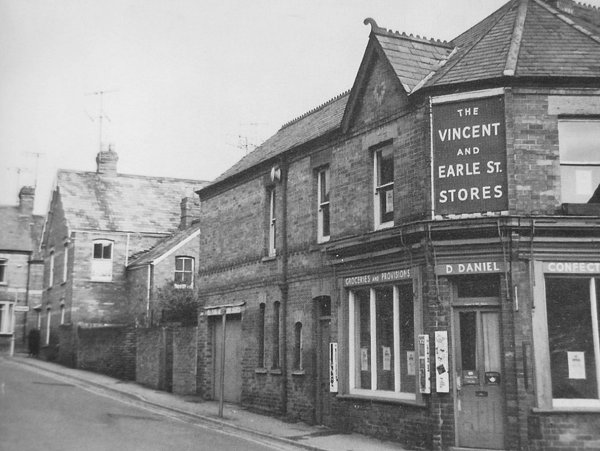
The Vincent and Earle Street Stores, with Earle Street off to the right. Photographed in the 1960s.
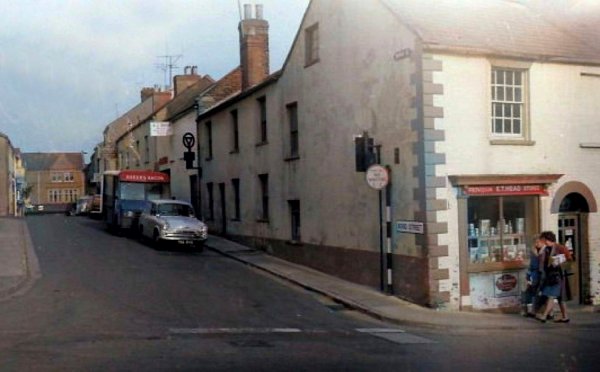
A colourised photograph of Bond Street seen from South Street in the 1960's. Mr Head's small corner shop was demolished, along with the house next to it, in order to improve vehicle access to Bond Street.
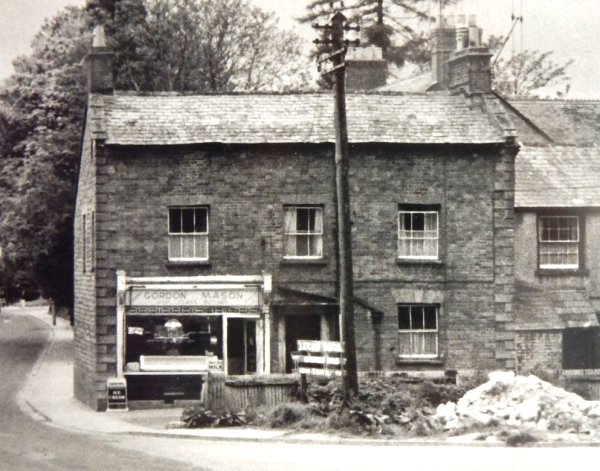
This photograph was taken in the 1960s and looks west along Preston Road at the left edge of the photo- the road running off to the right is Willow Road. The three-bay house end-on to Preston Road with a corner shop in its left-hand side is Providence Cottage, now replaced by modern housing. The shop was, for many years, the premises of Wyatt's the butcher, later Gordon Mason's, the butcher.
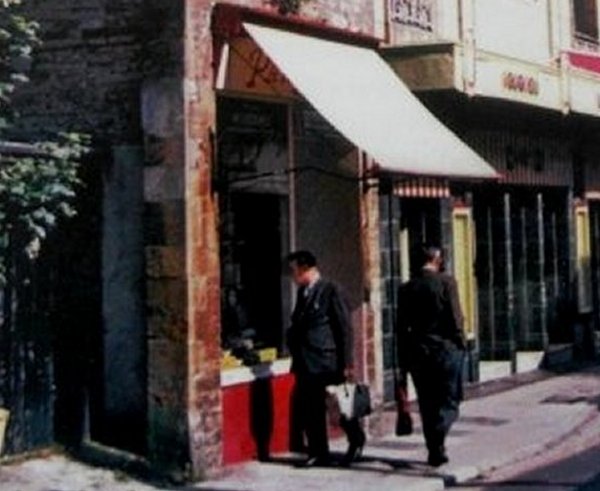
Seen here in the late 1960s, Parry's Penny Sweetshop next door to the Central Cinema in Church Street, always did a roaring trade when there was a good film showing. It had earlier been the premises of WR Saunders.
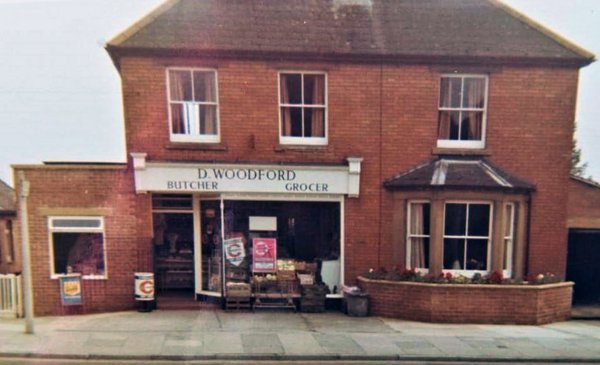
Seen in the 1970s, Woodford's, butcher and grocer's shop in Preston Road, just before the Larkhill Road traffic lights. Today it is a barber shop.

Courtesy of
Tony Robins
The iconic Robins' shop on the corner of Beer Street (left) and West Hendford (running across the photograph). Photographed in the 1980s it was, by this time, being run by Harold Robins' son, Tony. Many people will remember the coin glued to the entrance step, with Tony giggling every time a customer tried to pick it up. The shop is now a day care nursery.
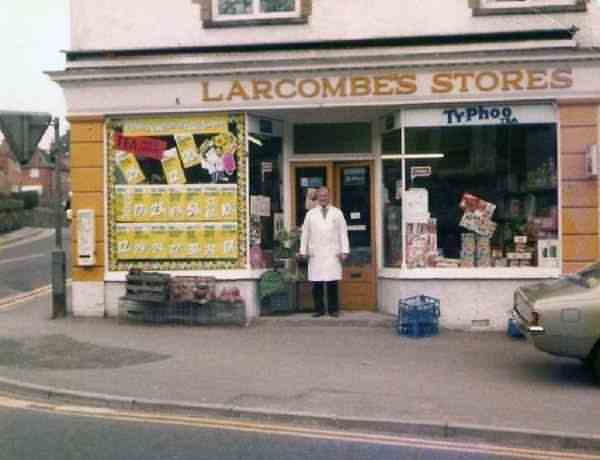
By 1900, Fred Larcombe (1864-1946) and his wife Annie (1864-1924), together with their four sons (two of whom were to be killed in the Great War) had moved to Yeovil and were living at 4 Great Western Terrace. Presumably at this time, Fred had his grocery shop in Sherborne Road on the corner of St Michael's Avenue.
Above is Larcombe's Stores, photographed in the 1980s. For a generation of Yeovilians this was known as Larcombe's Corner. Standing in the doorway is Bill Abbott who, together with his wife Dorothy, owned the shop until his retirement in the 1980s. The shop is now a private house.
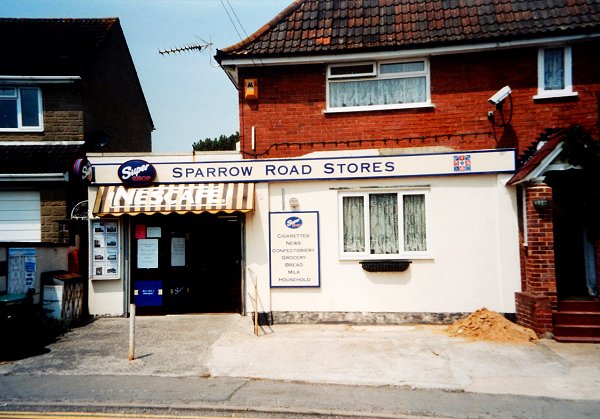
Courtesy of
Vivien and John
Cornelius
The Sparrow Road Stores, almost opposite Mitchelmore Road - another 'corner shop' now closed and converted back to a private house. Photographed in 2003.
Larger 'Sole Trader' Shops
It was not uncommon for some more entrepreneurial shopkeepers to expand both their range of goods, but also their premises - especially in the late nineteenth century.
Thomas William Clements was born in 1837. By 1861, he was living and working as a grocer's assistant in a grocery shop in High Street, Street. In 1863, he married and moved to Yeovil, where he established his own grocery business on the corner of Sherborne Road and Wyndham Street. By 1889, Thomas had opened a branch shop at Alma House in High Street, just along from the Mermaid Hotel. By the 1890s, he had opened the Town & County Stores, seen above, at 22 High Street. Thomas Clements died in 1929 at the age of 93.
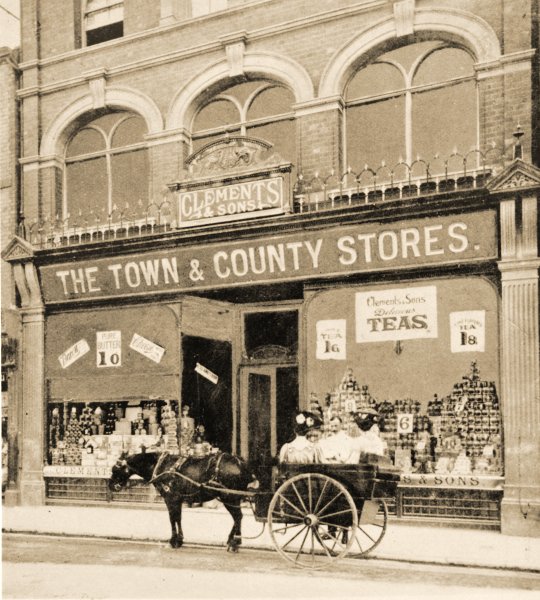
Courtesy of Jack
Sweet
Thomas Clements' shop in High Street, photographed around 1900.
By the time of the 1891 census, Charles John Hook and his wife Sarah were living above their shop on the north side of Middle Street, next door but one to the entrance to Frederick Place, under the sign of the 'Golden Canister'. The building, of three storeys and three bays with simple fenestration above street level remains today.
The following is from the 1891 edition of Where to Buy - "... The following are a few of the special departments - Teas, coffees (which are roasted daily on the premises by an improved roaster, thus ensuring the freshness so necessary), general groceries, colonial and Italian produce, provisions, proprietary articles, patent medicines, toilet requisites, aerated and foreign natural waters, perfumery, brushes, Australian and American tinned meats and fruits, &c, in every one of which will be found goods of a very high standard, and offered at a price that, to say the very least, will compare with any store in the kingdom."
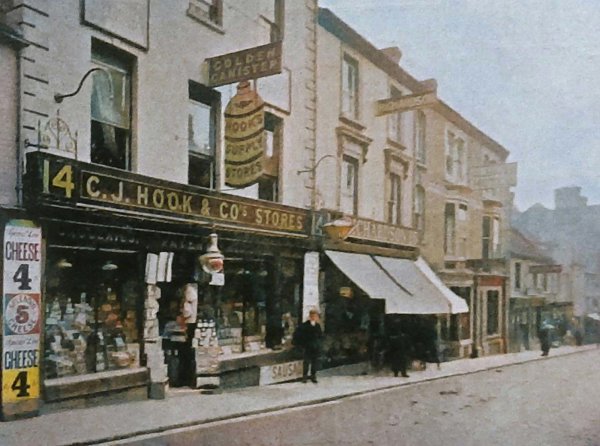
This colourised photograph was taken by Yeovil Photographer Jarratt Beckett and published in his 1897 book "Somerset viewed through a Camera". Charles Hook's supply stores on the north side of Middle Street, under the sign of the 'Golden Canister', in this photograph. To give an idea of where this is, the entrance to Frederick Place is beneath the two single windows and the white awning at the left end of the Albany Hotel. The buildings of Hook's, Richardson's and the Albany Hotel survive to this day.
Dawe & Son, grocers and provision merchants, occupied a central location in the Borough for the last half of the nineteenth century. Certainly by 1875, James Dawe was listed in the Post Office Directory as a grocer of High Street (actually in what we would call the Borough, but still technically High Street). He was listed almost annually in Whitby's Yeovil Almanack Advertiser as a grocer and provisions merchant of 10 High Street, latterly known as the Gun Tea Warehouse.
The following is from the 1891 edition of Where to Buy - "... 'The Gun Tea Warehouse' has gained high reputation during the fifty years of its existence for the superior blends, which are sold at low prices... a complete stock of general groceries, sugars, spices, sago, rice, sauces, biscuits, cakes, tinned goods, pickles, preserves, etc. The stock of bacon, hams, and cheese is also good and in great variety. Mr Dawe keeps a very fine assortment of British and foreign wines and cordials; the 'invalid port', for which he is sole agent in the district, is a most remarkable and effective tonic."
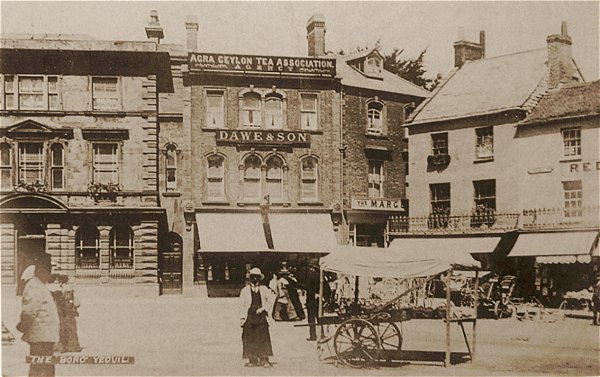
This postcard is dated 1906 and shows the Wilts & Dorset Bank (now Lloyds TSB) at left, then grocer and tea dealer JH Dawe & Son who were in the Borough from the mid-1870s to the 1910s. The first white building to the right, behind the covered hand-cart, was the premises of Hayne's the butcher (see above).
Supermarkets
There are sixteen supermarket chains currently operating in the United Kingdom. The food retail market has been dominated by the 'big four' supermarkets -Tesco, Sainsbury's, Asda and Morrisons - who made up over three quarters of sector market share in 2010. Tesco is the largest retailer in Great Britain, with a market share of 27.5% at the end of 2022.
The following is not an exhaustive list, I just don't have 'old' photos of any other supermarkets.
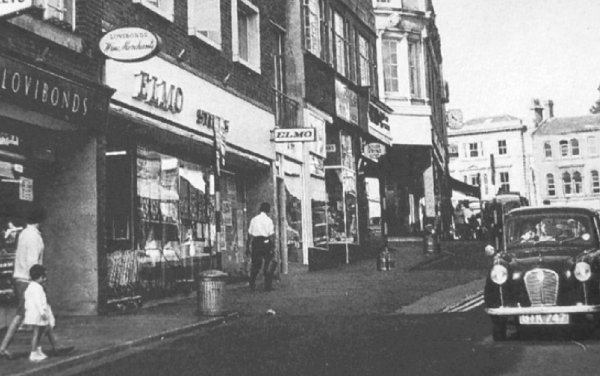
Yeovil's first food supermarket was Elmo, in Middle Street, built on the site of the former George Inn. Elmo was a small chain of 28 stores, based in East Anglia and the South of England. The Elmo chain was bought for £1 million by Fine Fare in 1967 and all the Elmo stores were rebranded as Fine Fare. Fine Fare was Britain's third supermarket until the 1980s, behind Tesco and Sainsbury's. The Fine Fare chain was bought by the Gateway Corporation in 1986 and all the Fine Fare shops were rebranded as Gateway by 1988 (itself re-branded as Somerfield in 1992). The building was later occupied by Primark, but is now the premises of Poundland.
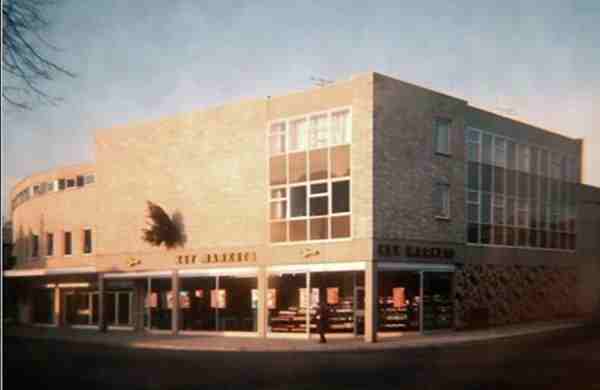
Today's William Dampier building, photographed here in the early 1970s when it was occupied by Key Markets. Key Markets was created by food giant, Fitch Lovell, in 1963. Yeovil's Key Markets moved into a new building, called Key Markets House (converted to the Premier Inn in 2014-15), in the late 1970s. The Key Markets chain was purchased by the Dee Corporation in 1983 and re-branded as Gateway. Gateway, in turn, was re-branded as Somerfield in 1992.
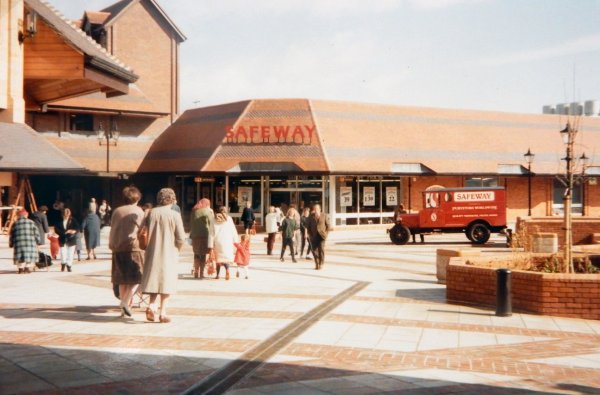
The brand new Safeway store in the Quedam, photographed in early 1985 (before the Quedam project was fully completed). The Safeway chain was founded in 1962, but was bought by Morrisons in 2005. This building is now occupied by Dunelm.
Jack Cohen, the son of Jewish migrants from Poland, founded Tesco in 1919 when he began to sell war-surplus groceries from a stall at Well Street Market, Hackney, in the East End of London. The Tesco brand first appeared in 1924, with the name coming about after Jack Cohen bought a shipment of tea from Thomas Edward Stockwell. He made new labels using the initials of the supplier's name (TES), and the first two letters of his surname (CO), forming the word TESCO. In 2011, it was the third-largest retailer in the world measured by gross revenues.
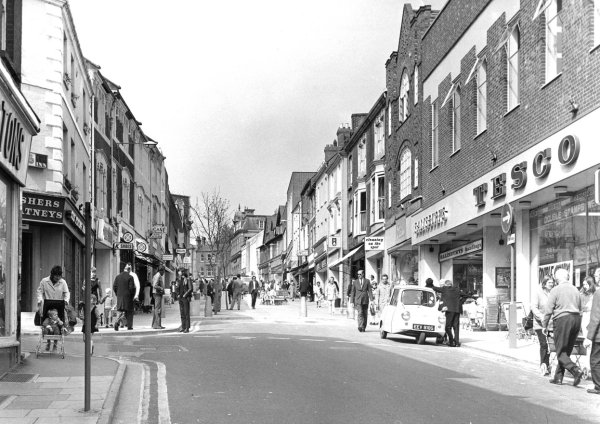
Photographed around 1975, this Tesco store in Middle Street, opposite Bond Street, is now occupied by Boots the Chemist. This Tesco store finally closed on Saturday 29 February 1992 and the new Tesco store in Huish, opened at 9am on Tuesday 3 March 1992.
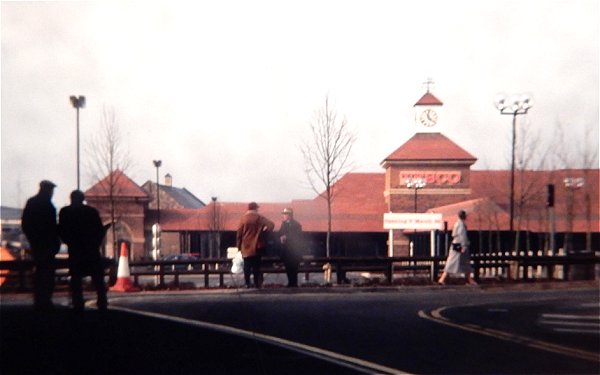
The newly-opened Tesco superstore, Tesco 'Extra', photographed in early 1992 from the junction of Westminster Street and Clarence Street. The additional floor of the car park was added about a decade later.
As well as the Tesco Extra, photographed above, Yeovil has three 'Tesco Express' outlets at Cavalier Way, at The Forum, Abbey Manor, and on Ilchester Road in what had originally been the Picketty Witch pub.
![]()
5. Delivering Food and Drink
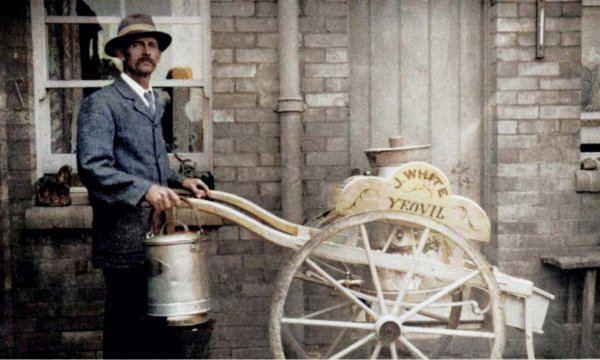
This is a colourised photograph, probably dating to the 1920s, of a dapper milkman, with his handcart and the small milk churns he used in delivering milk around Yeovil. Joseph White was the proprietor of the Reckleford Dairy, certainly from the 1890s.
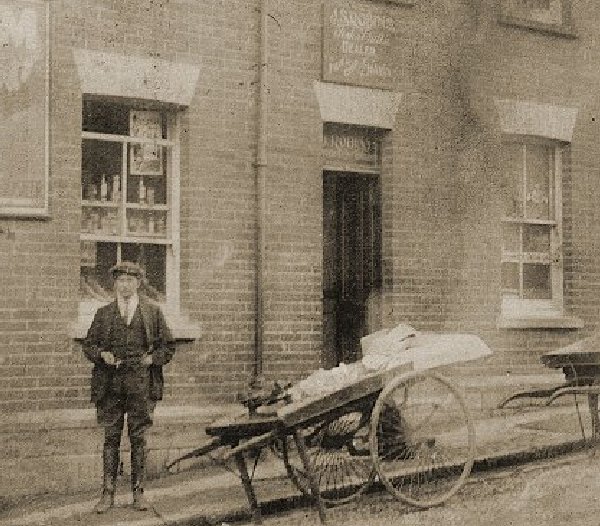
This photograph dates to the 1930s and shows the shop of John "Nat" Robins, on the corner of Frederick Place and Vicarage Street. Standing outside is his son, Harold, with the handcarts used to take their wares around town and nearby villages. Nat and Harold were the grandfather and father of Tony Robins (see above). Tony recalled "During the Depression my grandfather used to get fresh fish delivered from Grimsby and Lowestoft and he had four lads, including my father, who used to push his barrows all around the streets and out to the villages such as Mudford and Coker, selling fish as well as fruit and veg. In those days you had what were called 'knockers' - young lads who ran in front of the barrow, knocking on doors to get people's attention."
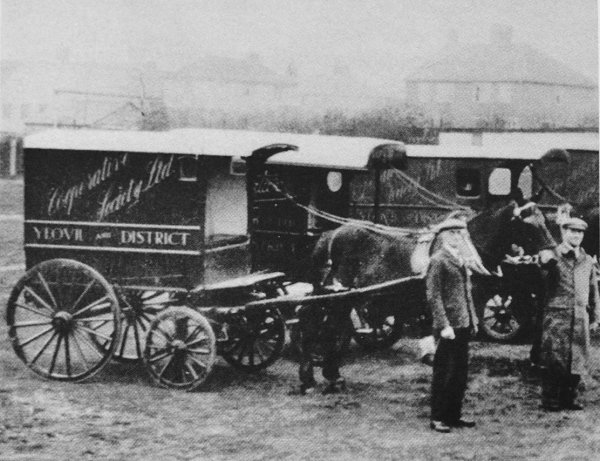
The Yeovil & District Co-operative Society's horse-drawn bread delivery vans of the 1900s through to the 1930s. The Co-op's delivery service was motorised in the 1930s - see below.
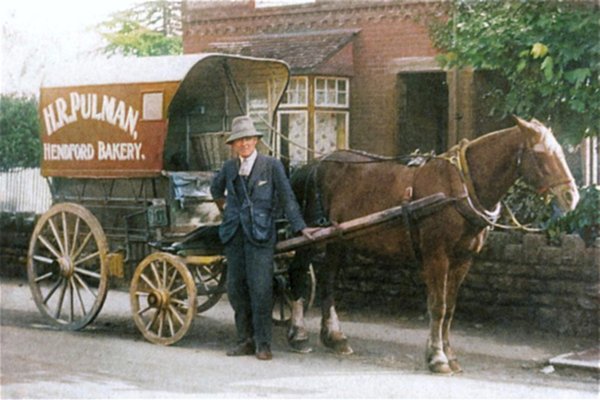
This colourised photograph
features in my
book 'Secret
Yeovil'
Henry Rundle Pulman started his own bakery, the Hendford Bakery, based at 59 Hendford (almost opposite Hendford Manor), where he and his family also lived. He was well known locally for baking Hovis and Dr Allinson's wholemeal bread with the latest up-to-date machinery and appliances. His bread was delivered by Cyril Rendell - Henry Pulman's delivery man - seen here around 1920, with his horse-drawn bakery delivery cart.
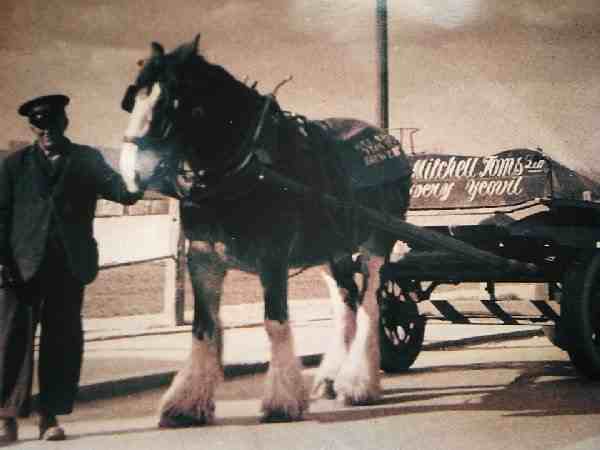
Courtesy of
David Potten
Henry John Walters leading a dray horse of Brutton, Mitchell Toms Ltd, probably in the 1940s or 1950s.

This colourised photograph was taken in 1939 as part of the jubilee celebrations of the Yeovil and District Co-operative Society and their fleet of delivery vans are lined up on Fairground Field in Huish. The large building at right is the rear of Huish County Junior School, which is itself masking the view of Yeovil Town Football Ground with its famous sloping pitch. Queen Street is seen between the two-storey buildings to the left of the photograph with the Victoria Inn on the left corner, facing Huish.
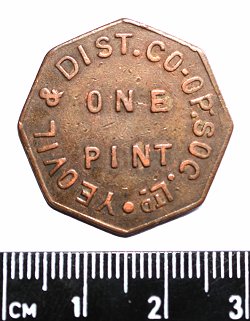 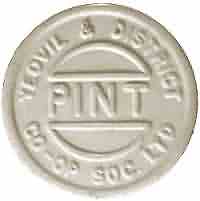 |
A bronze commodity token, from my collection, issued by the Yeovil & District Co-operative Society for a pint of milk. This type of token started to come into use after the First World War. They could be purchased at the local co-op as required, or in bulk and the value credited to your dividend account. The tokens could be left out or given to the delivery man, meaning deliveries were speeded up as no cash was involved or change given. This token is 27mm point-to-point, 25.3mm flat-to-flat. Obverse and reverse are identical. An oval bronze token for a half pint of milk is also known. The bronze tokens were later replaced by plastic tokens. When the price of the commodity was altered a token of a different shape or different colour was usually issued to denote this, especially with these later Yeovil plastic tokens of the 1950s / '60s which are known in cream (as this example), green, yellow, deep turquoise and red. These plastic tokens are 25mm in diameter and 1.75mm thick. |
Nelson and Agnes
Dibben,
had originally
both been in
service. By the
1930s, they were
established
bakers and
pastrycooks,
their shop being
in the left of
the two shops to
the left of the
Mermaid Hotel's
entrance. Their
main product
line, as
witnessed by the
sign on their
delivery van
(photographed
below), was
undoubtedly "Mrs
Dibben's Home
Made Cakes". It
should be noted,
that in the
early 1930s
there were
thirteen bakers
and
confectioners in
Yeovil - which,
it should be
remembered - was
a lot smaller
than it is
today.
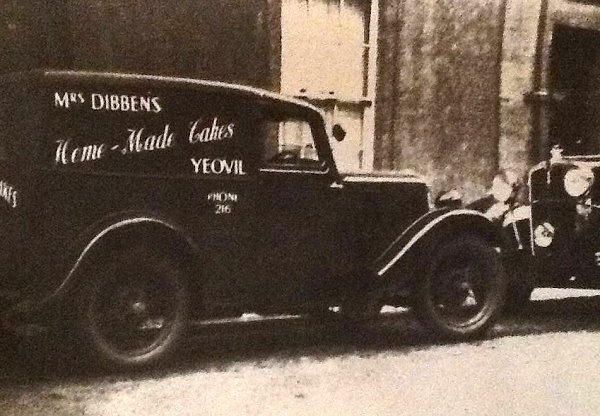
Courtesy of
Annie Snow
This photograph shows the delivery van for "Mrs Dibben's Home Made Cakes" of Yeovil. Probably dating to the 1930s.
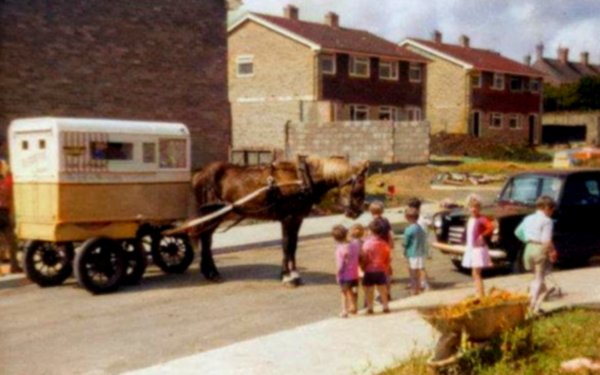
From my
collection. This
colourised photograph
features in my
book "Lost Yeovil"
In the early 1960s a horse-drawn ice cream van delivers to newly-built Sandringham Road.
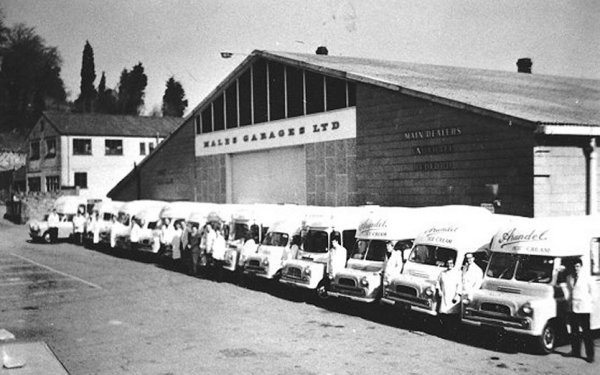
In the 1960s, the Arundel Cafeteria was in Middle Street. They also made ice cream, and Arundel's fleet of ice cream vans is seen above, photographed in 1966, parked up by Males Garages in Addlewell Lane.
![]()
6. Eating Out
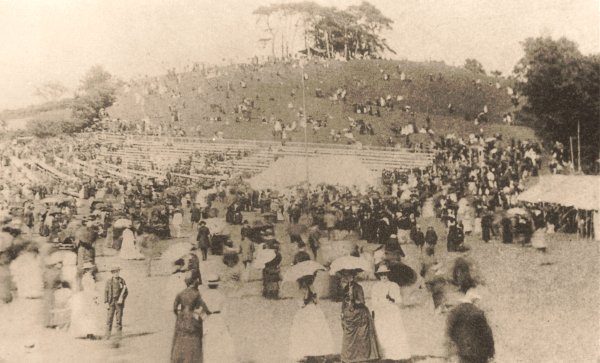
You didn't have to dine out in a restaurant. Here, crowds gather at Wyndham Hill in 1887 to celebrate the Golden Jubilee of Queen Victoria. At this time it was known as Victoria Hill and the lower slopes were known as the Fete Field. At centre, are seen the tables and seating that accommodated some 3,000 ticket holders for the dinner and, later, Sunday school children for a free tea. Notice that at this time there were more than just the four lime trees on the summit. In 1887, the trees were exactly 25 years old - since 25 trees were planted in 1862 to celebrate Queen Victoria's Silver Jubilee.
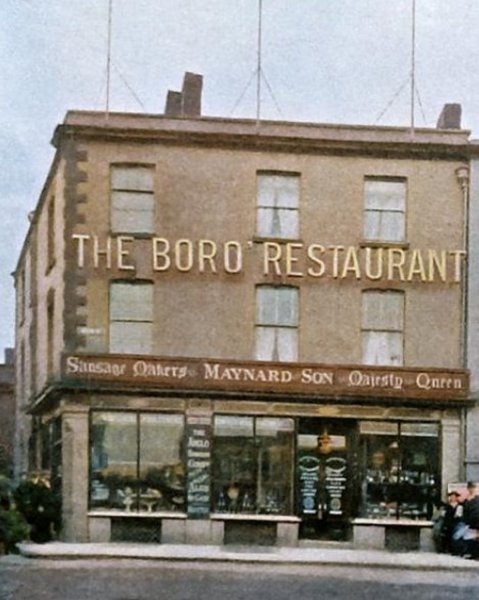
This colourised photograph above was taken by Yeovil Photographer Jarratt Beckett and published in his 1897 book "Somerset viewed through a Camera". Maynard & Son proudly proclaims in their shop signage that they are "Sausage Makers to Her Majesty the Queen". The Borough Restaurant was on the first floor.
In the early 1930's Maynard's business was bought by Cadena Café Ltd who advertised it as "Yeovil's largest and nicest cafe". It certainly was, and I remember having lunch in the upstairs dining rooms most Saturdays during the later 1970's. Two other things that many older Yeovilians will remember was the cashier's cubicle half-way up the grand staircase and, whether they were patrons or not, the fabulous smell of roasting coffee that was fan-assisted into the Borough from the Cadena. The Cadena Café closed in 1982 and the building was demolished the following year, in 1983.
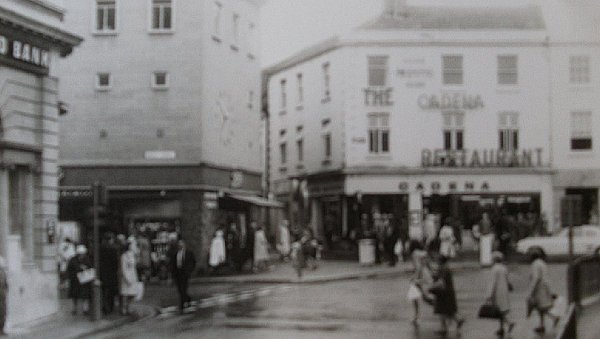
The Cadena Restaurant, photographed during the 1970s.
The Mermaid Hotel was the oldest surviving licensed premises in Yeovil (until it permanently closed in 2019). In 1769, when Samuel Lloyd took over the establishment from George Gast ".... the whole House (except two Rooms in Front) with the Assembly Room, Stables, and all other Offices, have been built from the Ground by Mr Gast within these ten Years...". Later, the Assembly Room became the Mermaid's restaurant, seen below.
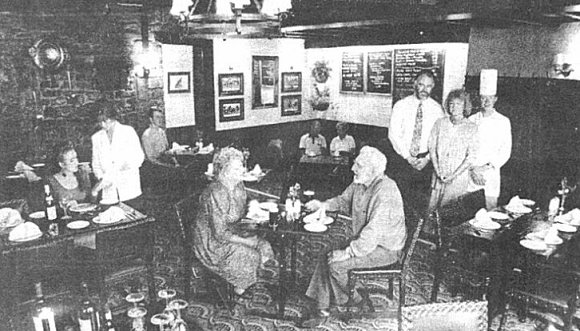
The lower part of the restaurant (near the bars) at the Mermaid Hotel, 1993.
The Green Lantern was a short-lived restaurant in Kingston during the latter part of the 1940s in what had been a private house. All references to the restaurant, which could accommodate up to 150 persons, date to between 1947 and 1950. The restaurant was owned and run by Egglestone John Bunce, born in Yeovil in 1914. Bunce left Yeovil in the very early 1950s at which time it is thought that the Green Lantern in Kingston closed.
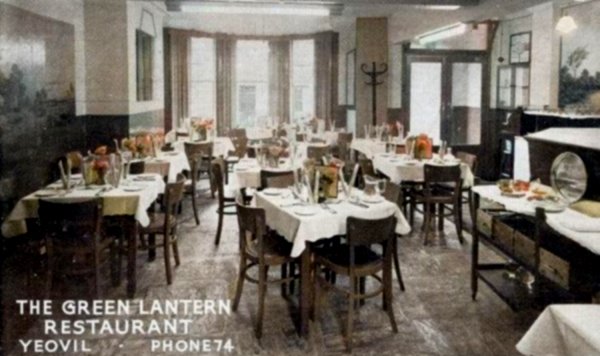
This
photograph
features in my
book "Lost Yeovil"
A colourised postcard of the interior of the Green Lantern Restaurant, dating to the late 1940s.
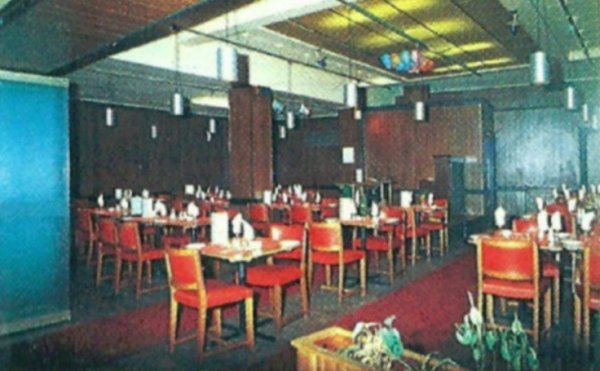
From my
collection
An enlargement from a 1970's multi-view postcard, showing the interior of the Three Choughs. This photograph shows the restaurant... and more memories - we had many a meal in here.
In the Yeovil Guide of 1962, the Manor Hotel and the Mermaid Hotel were the most expensive hotels in Yeovil with Bed and Breakfast from 25/- per night (about £48 at today's value). For comparison the Three Choughs Hotel was 22/6 per night. By 1970, however, Bed & Breakfast at the Three Choughs Hotel was 42/- per night with breakfast only at 9/6 and tea from 3/6. The Three Choughs closed in 2004 and has since been converted into offices and flats.
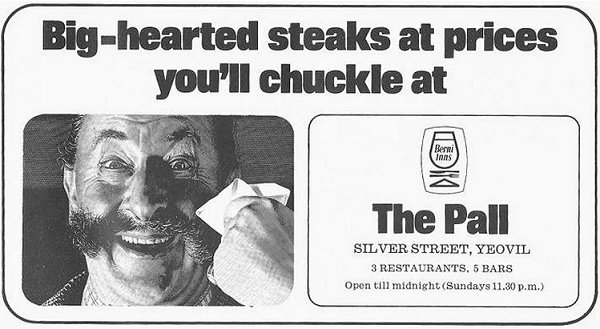
From my
collection
Above, is an ad from the 1970 Yeovil Official Guide Book. Hands up those of you who remember the Pall Tavern in Silver Street as the Berni Inn in the 1970's and early 1980's with its three restaurants and five bars. Those were the days - we used to eat here with great regularity. It was one of the few Yeovil pubs selling decent ales and my pals and I were regulars here for years and it always featured in our regular Gentlemen's Cultural Walking Refreshment Tours of Yeovil (i.e. crawls). The Pall finally closed in the summer of 2023.
Many Yeovilians have fond memories of the Cottage Café in Hendford, on the corner with Waterloo Lane. The building itself is probably eighteenth century and built as a small town house. In 1928, William Frederick Banfield (see above) opened the Cottage Café. At the rear of the premises he built a bakery. With kitchens on both floors, the ground floor had a cafe as well as a shop, while upstairs the dining room ran across both 71 and 72. The dining room was later partitioned when Modelkits started. The café was later run by his son Eric, while Modelkits of the 1970s and 80s was run by his grandson Bob, late verger at St John's church. The Cottage Café closed in 1972 and Modelkits was sold in 1993.
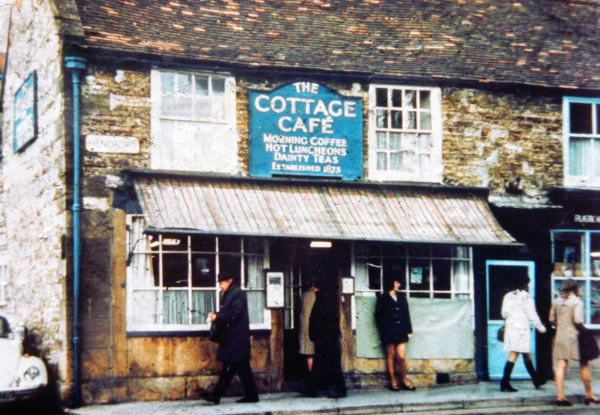
Courtesy of Rob
Baker
The Cottage Café, photographed around 1972.
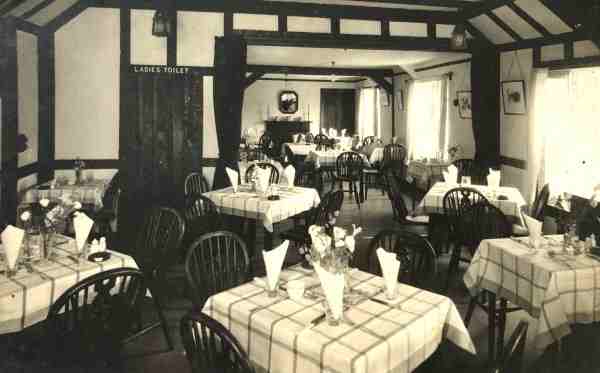
Courtesy of Bob
Banfield.
This
photograph
features in my
book "Lost Yeovil"
The upstairs dining room of the Cottage Café. A wall would later be built across the room (where the curtains are either side) to separate the dining room from the first floor of Modelkits.
... and a coffee or a light snack, perhaps?
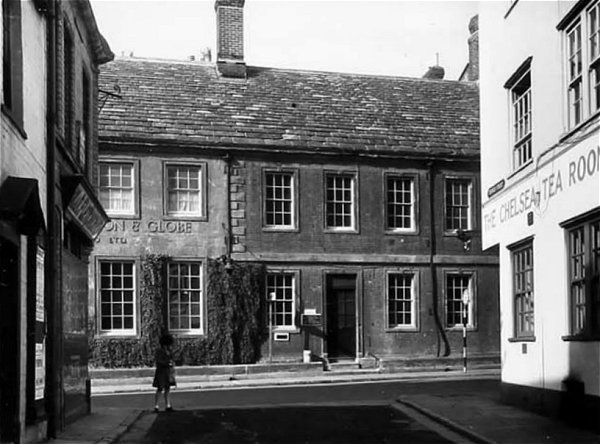
Princes Street, photographed in 1942 from Church Street. Who remembers the Chelsea Tea Rooms on the corner?
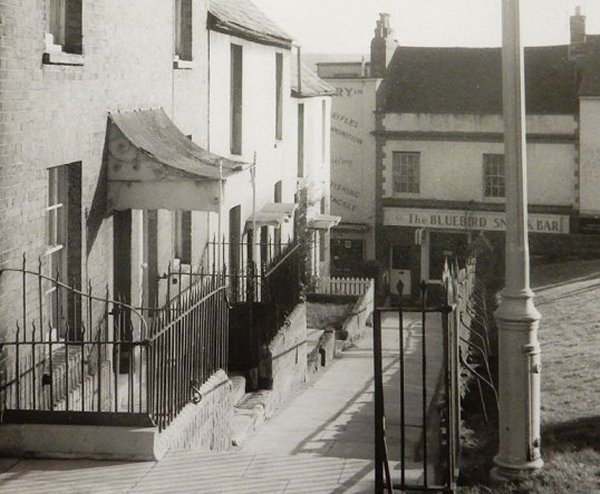
Looking east along Church Terrace in the 1960s, towards the Bluebird Snack Bar, above, in Silver Street. If you didn't frequent the Bluebird, you were probably a regular at the Black Bird Café (below).
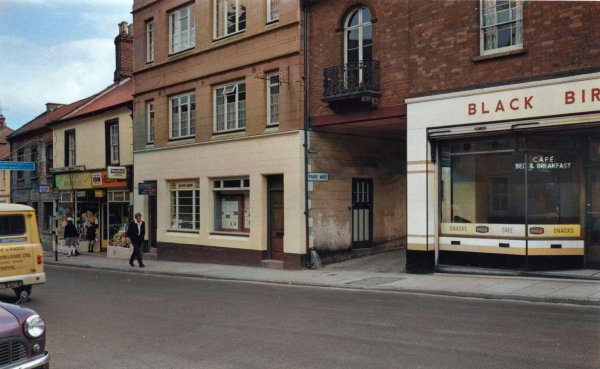
From the
Cave
Collection
(colourised).
Courtesy of South Somerset Heritage Collection
The west side of Kingston photographed in the mid-1960s. At centre is the Kingston entrance to Park Way (it even has a street nameplate) - through the porte-cochere next to the Black Bird Café.
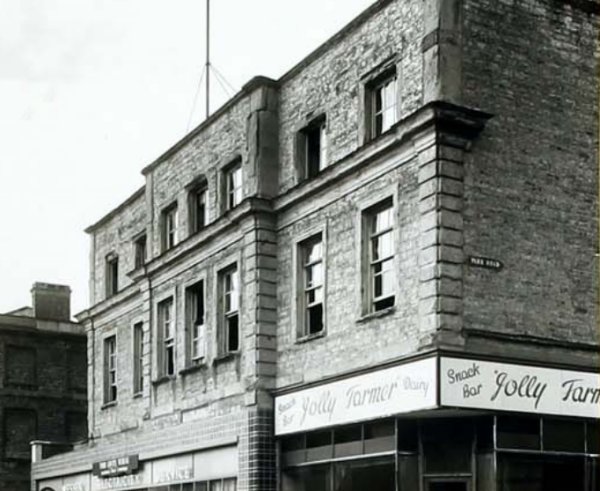
In the 1940s and '50s, the Jolly Farmer Snack Bar, above, was in the corner of Old Sarum House, on the junction of Park Road and Princes Street. It was styled on the American soda parlour. This photograph was taken in 1942.
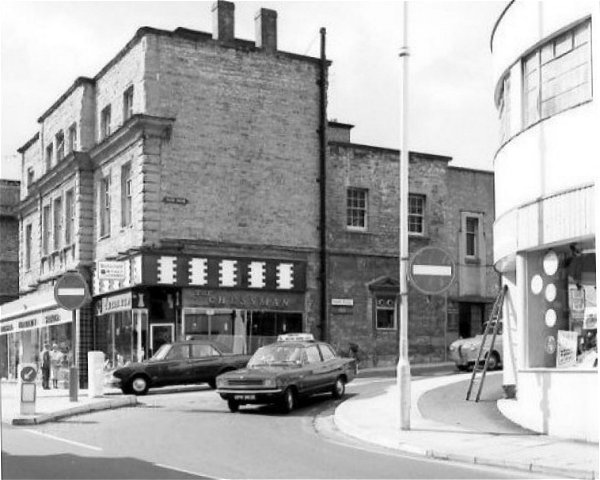
The entrance to Park Road seen from Princes Street in the 1960s, with the Chessman Café on the corner. It had previously been the Jolly Farmer Snack Bar (above).
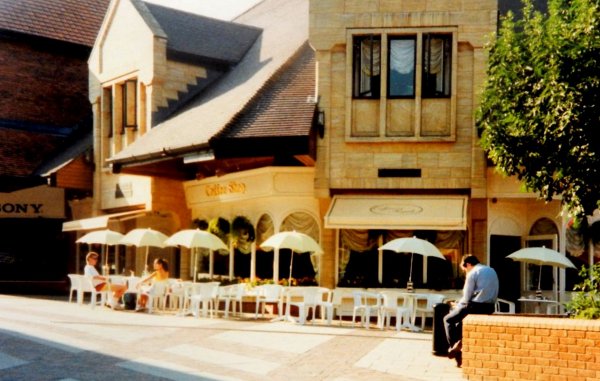
Seen here in the early 1980s, Café Royal was sited in the new Quedam centre, offering continental-style pavement seating. It is still a café today.
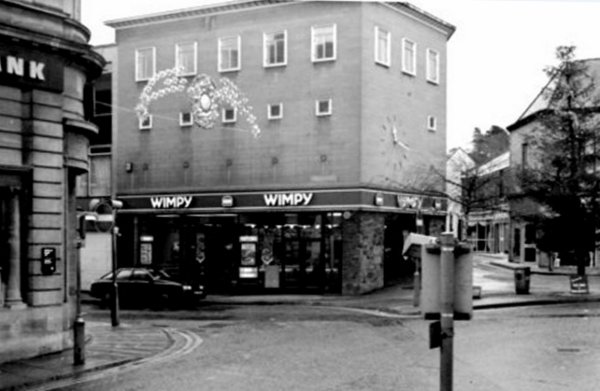
Courtesy of
Chris Rendell
In the 1970s, Yeovil had a Wimpy Bar in the Triangle, on the corner of Stars Lane, but moved around 1975 to its new location, simply called Wimpy' in the Borough, seen here in 1985. Grand Metropolitan PLC (which had also recently acquired Burger King) bought it and converted it (and nearly nearly a hundred other Wimpy counter-service units) into Burger King - as it remains today. By 1990, 200 Wimpy restaurants were fully converted into Burger Kings.
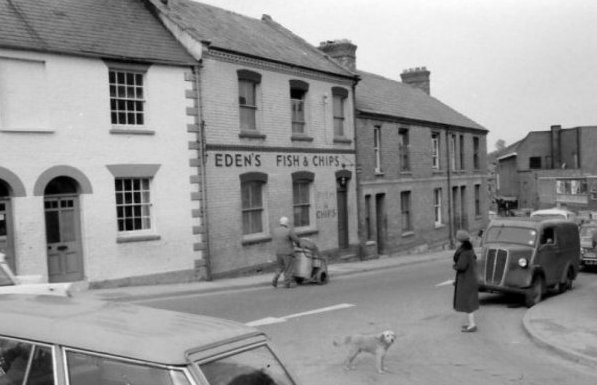
In 1905, Eden's in South Street was being advertised as 'under new management' and by 1907 Collins' Yeovil Directory was listing it as Mr W Eden's fried fish shop. By 1954, it was advertised as Eden's Fish and Chip Saloon' in Edwin Snell's Directory. Eden's fish and chip shop closed in the 1960's, at a time when many of us will remember that fish and chips were invariably wrapped in yesterday's newspaper! It then became 'Seafoods' fish & chip restaurant in the late 1960s, since when it has been a series of (chiefly Chinese or Thai) takeaways.
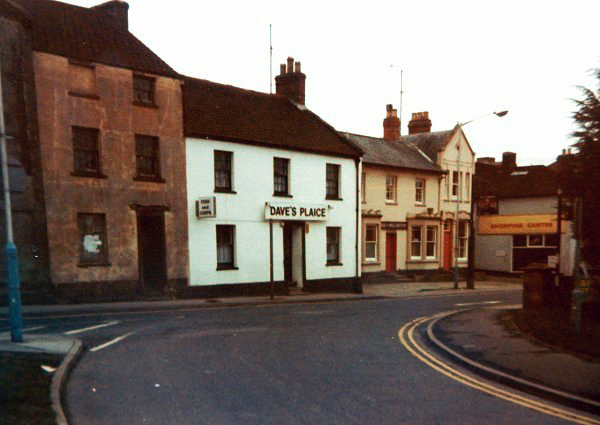
Courtesy of
Colin Haine.
This
photograph
features in my
book "Lost Yeovil"
The western end of the run of buildings on the south side of Townsend, photographed in the late 1980s. At the centre is Dave's Plaice fish & chip shop and to its right is the Duke of Wellington. By 1992, just before demolition, Dave's Plaice had become the Fish Fryer.
Dining at Home, perhaps?
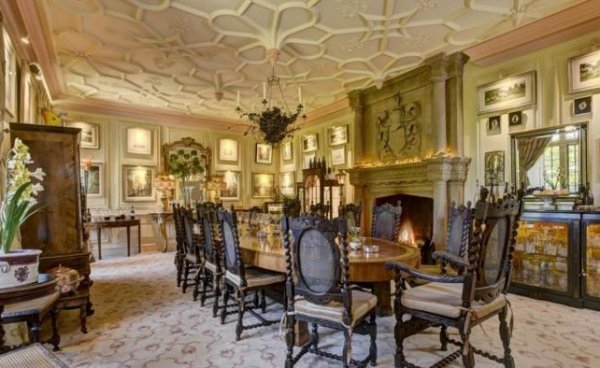
The dining room at Newton Surmaville, from the 2007 Sale Catalogue.
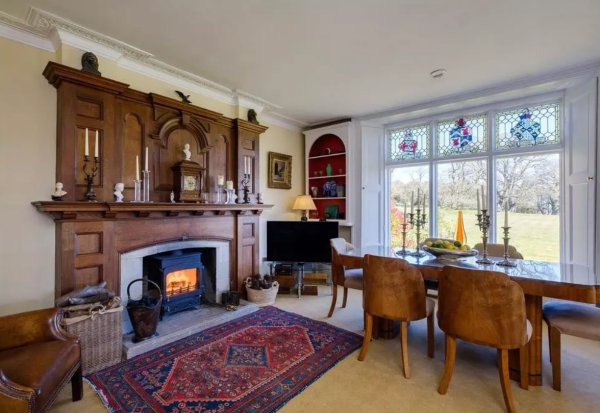
... and the dining room of a wing at Aldon.
School Dinners, anyone?
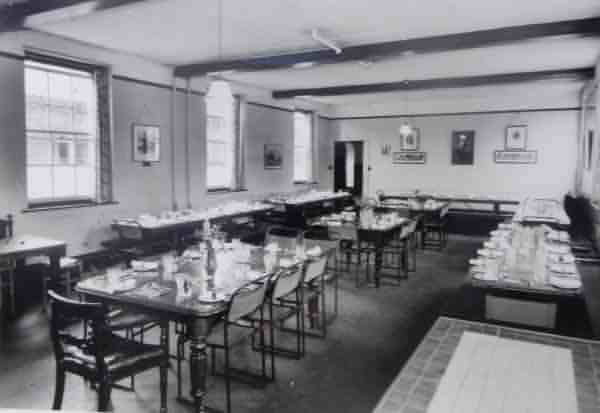
The dining room of the Park School, built in 1927.

From my
collection
The Refectory of St Gildas' Convent School, in a 1930's postcard.
![]()
7. Feeding Yeovil at War
In January 1917, Germany began its submarine warfare campaign in an attempt to starve Britain into submission. In response, voluntary rationing was introduced in February 1917. The voluntary ration book below, was issued to Mr Palmer of 12 Talbot Street, in October 1917.
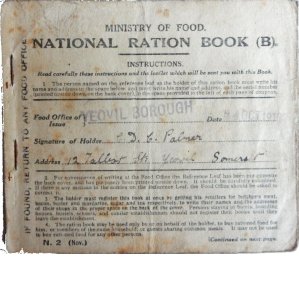 Bread was
subsidised from
September
that year, and
compulsory
rationing was
introduced in
stages between
December 1917
and February
1918 as
Britain's
supply of wheat
decreased to
just six weeks'
consumption. In
order to ease
the process,
compulsory ration books
were introduced
in July 1918
for butter,
margarine,
lard, meat, and
sugar. Each
individual was
tied to a
specific
retailer. The
basic ration of
sugar, butter
or margarine,
tea, jam, bacon
and meat came
to about 1,680
daily
calories.
Bread was
subsidised from
September
that year, and
compulsory
rationing was
introduced in
stages between
December 1917
and February
1918 as
Britain's
supply of wheat
decreased to
just six weeks'
consumption. In
order to ease
the process,
compulsory ration books
were introduced
in July 1918
for butter,
margarine,
lard, meat, and
sugar. Each
individual was
tied to a
specific
retailer. The
basic ration of
sugar, butter
or margarine,
tea, jam, bacon
and meat came
to about 1,680
daily
calories.
It was adjusted for workers performing strenuous labour, children and vegetarians. Nutritional programmes for nursing mothers and young children were established by many local authorities. Unlike most of Europe bread was not rationed. Rationing didn't end completely until 1921.
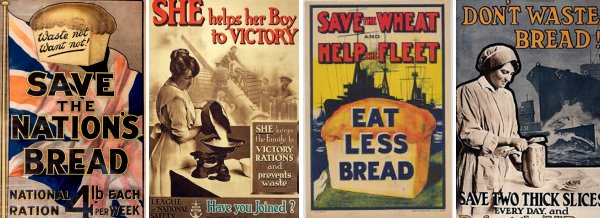
Yeovil would have seen many of these posters during the Great War to encourage people to be more careful and conserve food supplies - especially, it would seem, bread.
During the Second World War, in order to combat shortages, the Ministry of Food once again instituted a system of rationing. To buy most rationed items, each person had to register at chosen shops and was provided with a ration book containing coupons. The shopkeeper was provided with enough food only for his registered customers. Purchasers had to present ration books when shopping, so that the coupon or coupons could be cancelled as these related to rationed items.
Rationed items had to be purchased and paid for as usual, although their price was strictly controlled by the government and many essential foodstuffs were subsidised; rationing restricted what items and what amount could be purchased as well as what they would cost. Meat was the last item to be derationed and rationing ended completely in 1954, nine years after the war ended. The UK was the last country involved in the war to stop rationing food.
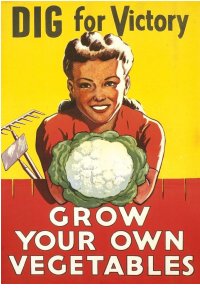 During
the Second World
War, the 'Dig
for Victory'
campaign was
created by the
British Ministry
of Agriculture
to make Britain
as
self-sufficient
in food as
possible.
Launched in
1940, the
premise of 'Dig
for Victory' was
to combat food
shortages by
promoting the
creation of
allotments in
gardens and on
public land.
The
'Dig for
Victory'
campaign was an
extremely
successful
marketing
initiative and
taken up
enthusiastically
by the public.
Many
members of the
public began to
grow their own
foodstuffs -
vegetables,
salads and fruit
- and many of
Yeovil's open
spaces were
turned over to
allotments or
used for
agriculture, as
seen below. Consequently,
Britain's
reliance on
imported food
was greatly
reduced.
During
the Second World
War, the 'Dig
for Victory'
campaign was
created by the
British Ministry
of Agriculture
to make Britain
as
self-sufficient
in food as
possible.
Launched in
1940, the
premise of 'Dig
for Victory' was
to combat food
shortages by
promoting the
creation of
allotments in
gardens and on
public land.
The
'Dig for
Victory'
campaign was an
extremely
successful
marketing
initiative and
taken up
enthusiastically
by the public.
Many
members of the
public began to
grow their own
foodstuffs -
vegetables,
salads and fruit
- and many of
Yeovil's open
spaces were
turned over to
allotments or
used for
agriculture, as
seen below. Consequently,
Britain's
reliance on
imported food
was greatly
reduced.
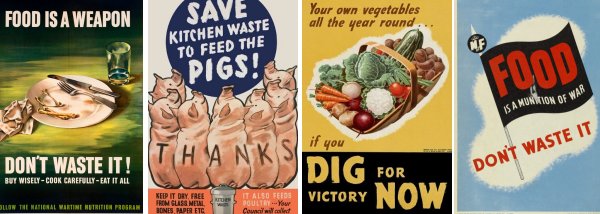
Just as happened in the First World War, so during the Second World War Yeovil saw many posters around town encouraging Yeovilians to be careful with their food and not waste it.
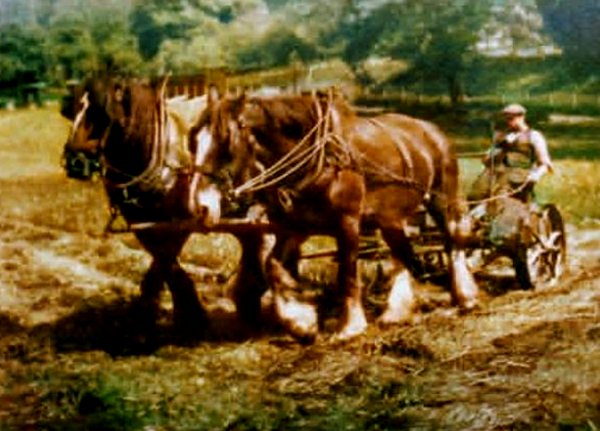
The meadow, later to be the site of Goldenstones, in a colourised photograph of August 1940, being ploughed up in order to plant food crops as part of the 'Dig for Victory' campaign.
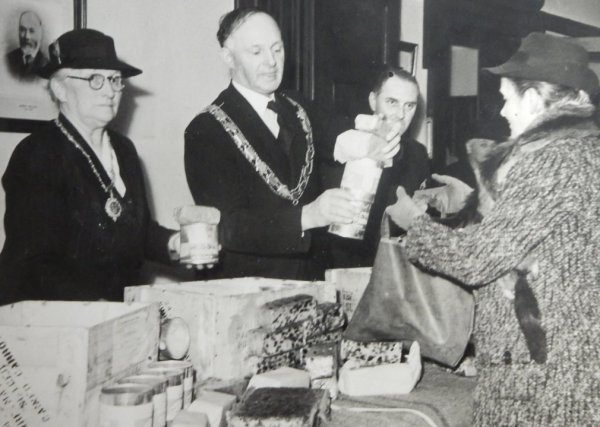
William Sidney Vosper, Mayor of Yeovil from 1943 to 1946, and the Lady Mayoress, distributing food at the municipal offices, in King George Street, to people whose homes had been damaged by German air raids.
During the Second World War the Young Women's Christian Association (YWCA) was one of many voluntary organisations that worked relentlessly for the war effort. The women of the YWCA worked to construct support systems for their neighbours and refugees, often with exceedingly limited resources. In Yeovil, the YWCA established the Yeovil War Workers' Club which was housed in the premises of Neal & Williams Ltd in Vicarage Street.
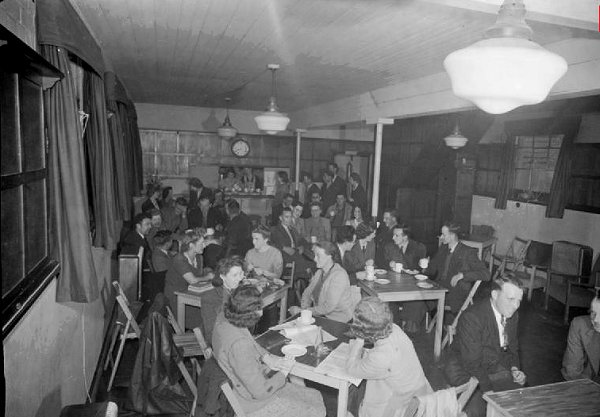
Courtesy of the
Imperial War
Museum
A view of the busy canteen at the YWCA Yeovil War Workers' Club in Yeovil in 1944. According to the original caption, prices were very reasonable, with tea costing 2d, coffee 3d and hot snacks 6d. Groups chat at tables in the foreground, whilst in the background men and women queue at the counter to buy refreshments.
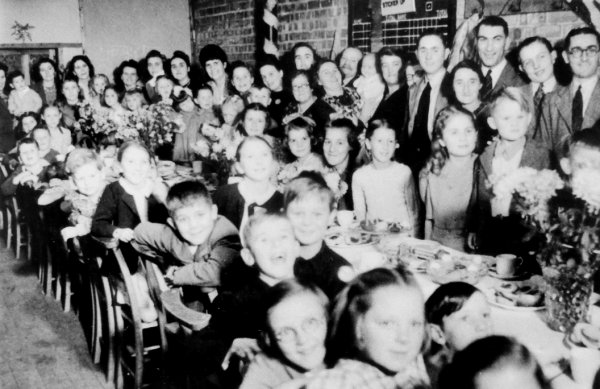
Despite the food shortages and rationing caused by the war, the children of Stiby Road enjoy their VE Day party in the skittle alley of the Westfield Hotel on 9 May 1945 - VE Day plus one. This was just one of many such parties held in Yeovil, regardless of rationing.
Despite the war coming to an end, shortages persisted and bread, which had been freely available during the war, was rationed for two years from July 1946. Animal products such as cheese, bacon, ham, meat and fats, as well as sugar, also remained scarce. It took until mid-1954 before rationing finally ended.
![]()
8. Advertising Food from the 1880s onwards
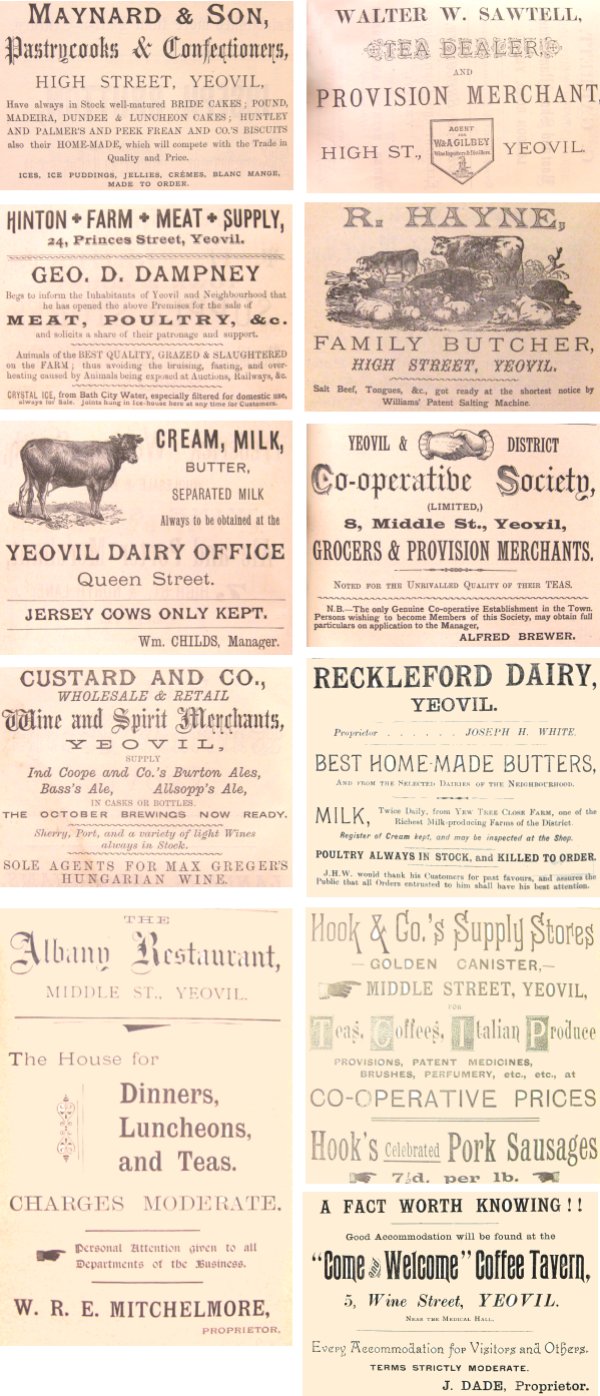
A few food-related advertisements of the 1880s and 1890s, published in the Western Gazette and Whitby's Yeovil Almanack Advertiser.
... and a few food posters
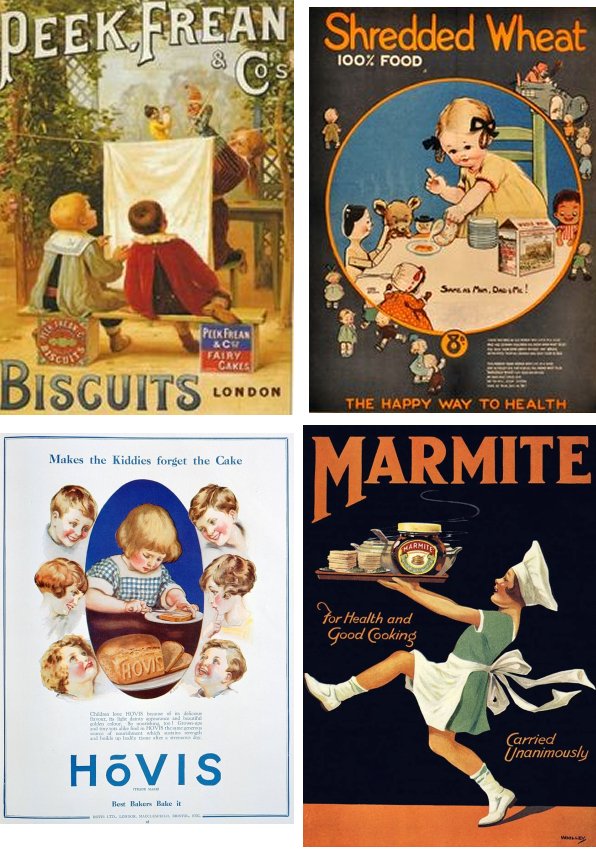
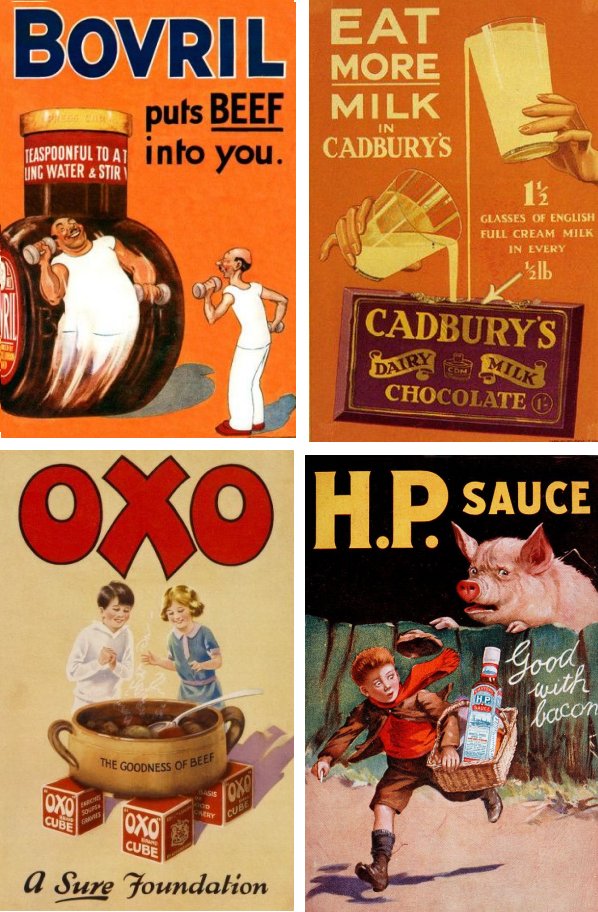
... and, of course, Yeovil's own -
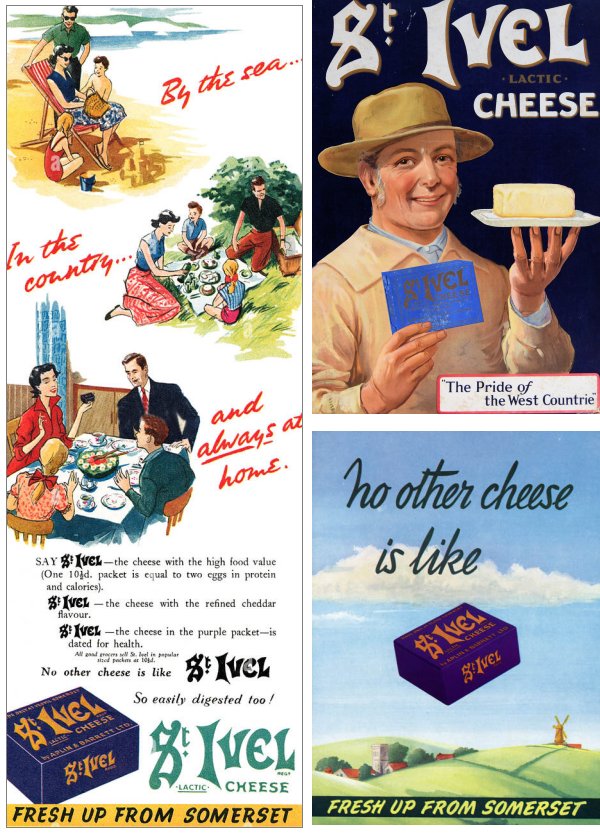
![]()
The distinctiveness of St Ivel cheese
For over 30 years St Ivel cheese has stood out high above a host of other types and styles of cheeses, for very good reasons. It has been recommended countless times by the medical profession because the Bulgaricus and Acidophilus cultures, incorporated in the making, attack harmful bacteria in the intestines and thereby produce conditions more favourable to good digestion. Moreover, these same cultures have produced a cheese of soft and fine texture which is therefore in itself capable of being digested by both old and young, strong or frail. These qualities have earned it the distinction of being the only cheese ever awarded a Gold Medal by the Medical Congress. Vitamins 'A' and 'D' are also present for resisting disease and promoting health.
Above all, St Ivel cheese, with its creamy taste, is delightful to eat both by itself as cheese, and also combined with salads, fruits or in different kinds of sandwiches. In the latter connection this book of recipes has been produced, which should appeal to all housewives.
It may be of interest to the reader to know that St Ivel was the first cheese ever offered to the public in small portions wrapped in 'protected' tinfoil.
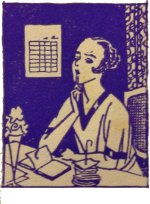
1 tablespoon St Ivel cheese, one tablespoon vinegar, 3 tablespoons olive oil, seasoning
This delicious dressing can be made with the St Ivel cheese and used for mixing with different salads.
Put the cheese into a basin and mash it down with a spoon. Add the oil very gradually, stirring constantly, then pour in the vinegar a little at a time and season to taste. The result should be a sauce of rich creamy consistency. This is particularly good served with a salad of cooked vegetables, or with fish salad.
Ivelato salad
Cold potatoes, cold cauliflower, a few slices of tomato or beetroot, St Ivel Cheese dressing
Mix some cold
sliced potato
with St Ivel
Cheese dressing
and let it
stand for a
short time.
Then pile it in
the centre of a
salad dish and
arranged a
border of green
salad around the
base. Or wash
some fresh
Nasturtium
leaves, use
them for a border and
decorate with
some of the
flowers.
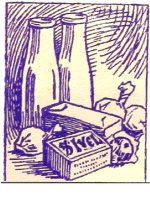 St
Ivel cheese and
fish salad
St
Ivel cheese and
fish salad
Cold cooked fish, St Ivel cheese dressing, a little butter, seasoning, biscuits
Flake some nicely cooked fish and mix it with St Ivel cheese dressing. Serve in individual salad dishes in layers with thin slices of cucumber. Sprinkle with finely chopped parsley and a little paprika pepper, or lay thin slices of anchovy across the top.
St Ivel cheese
balls
St Ivel cheese, celery or chopped nuts, a little butter, seasoning, biscuits
Mix any remains of cheese with a little butter, add seasoning if required, and form into small balls with the hands. A little chopped celery or some chopped nuts may be added to the mixture, all the balls may be rolled in ground nuts or finely chopped parsley. Arrange the balls on a pretty dish and garnish with parsley. Serve with biscuits.
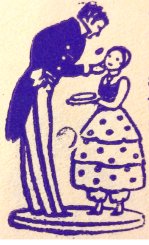 St Ivel cheese
and egg savoury
St Ivel cheese
and egg savoury
St Ivel cheese, eggs as required, lemon, margarine or butter, seasoning
Hard cook the required number of eggs, cuts them in halves and remove the yolks. Sieve the yolks and mix them with St Ivel cheese. Season with cayenne, salt, and a squeeze of lemon juice, and add a little melted margarine or butter to moisten the mixture. Cut small pieces off the white cups to enable them to stand and fill them with the cheese mixture, piling it high in the centre.
Serve garnished with a little salad. These are particularly good served with a tomato salad or cucumber salad, or with some crisp celery.
Walnut deceits
St Ivel cheese, walnuts, biscuit crumbs
Make some small cheese balls as described above and put them between halves of toasted walnuts. Then roll the walnuts in ground nuts or fine biscuit crumbs and serve them on a small paper d'oyley.
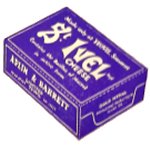 St Ivel cheese
and banana
sandwiches
St Ivel cheese
and banana
sandwiches
Sliced some bananas, or mash them to a pulp with a silver fork, and flavour with a little orange or lemon juice. Put a layer of this between slices of bread and butter spread with St Ivel cheese. Press together and trim neatly.
St Ivel cheese
and smoked
haddock
sandwiches
Chop some smoked haddock very finely and mix it with enough St Ivel cheese to flavour. Add a little butter, cayenne, a few drops of anchovy essence, and a squeeze of lemon juice. Use as a filling between slices of bread and butter, and garnish the sandwiches with small cress.
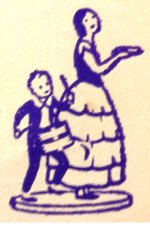 Harlequin
sandwiches -
brown and white
bread
Harlequin
sandwiches -
brown and white
bread
Cut some half inch slices of brown and white bread, an equal number of each, and spread them with butter and St Ivel cheese. Place four slices one all the top of the other alternating the brown and white, and press well together.
Then slice through the four layers with a very sharp knife and arrange the pieces neatly on a dish. These sandwiches look extremely original and attractive.
Nasturtium
sandwiches
Mix some St
Ivel cheese
with a little
cream and
spread it on
thin slices of
bread and
butter. Lay
some nasturtium
flowers -
making sure, of
course, that
they are free
from insects -
on the bread,
cover, and cut
the sandwiches
allowing a
flower for
each. Garnish
with nasturtium
leaves and a
few more
flowers.
St Ivel cheese
and potato
savoury
St Ivel cheese, cooked potatoes, a little margarine or butter, milk, two eggs, seasoning
Mash or sieve two cupfuls of cooked potatoes, and reheat them with a tablespoonful of butter or margarine and a little milk. Then add two yolks of egg and some creamed St Ivel cheese. Season to taste and beat well. Put the mixture into a greased pie dish and mask with the whites of eggs beaten to a stiff froth. Bake in a moderate oven until nicely browned.
Tomato and egg
savoury
Two eggs, seasoning, two tablespoonfuls tomato purée, two slices of toast, one ounce of butter, St Ivel cheese
Make the tomato purée by rubbing either fresh or tinned tomato through a sieve. Prepare the toast, spread it thickly with St Ivel cheese, place it in a fireproof dish and put in the oven to keep warm. Then melt the butter in a saucepan, add the tomato purée, eggs lightly beaten and seasoning to taste. Stir constantly over a gentle heat until the mixture thickens, then pour it quickly over the cheese toast. Garnish with parsley and serve at once.
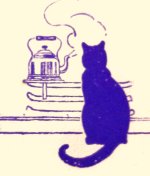 Fish rarebit
Fish rarebit
One cupful St Ivel cheese sauce, one cupful cooked fish (flaked), one egg, one tablespoonful sherry, toast
To one cupful of cheese sauce add one cupful of cooked and flaked fish. Make these thoroughly hot without boiling, then add one beaten egg and one tablespoonful of sherry. Heat for a minute or two longer and serve on slices of toast.
St Ivel cheese
muffins
Two tablespoons St Ivel cheese sauce, three stale muffins, a little melted margarine, three eggs
Split three stale muffins and scoop out the soft insides. Brush over the insides of the muffins with a little melted butter and crisp them in the oven. Chop three hard-cooked eggs, and mix them with some well seasoned cheese sauce. Add also the crumb from the muffins and mix together. Fill up the muffins with this, putting two pieces together, and return them to the oven until thoroughly hot.
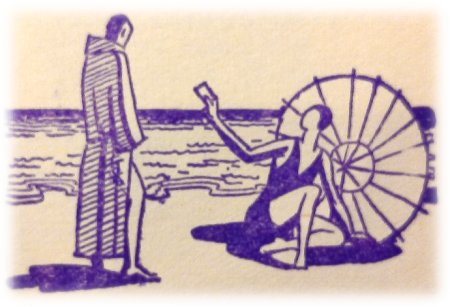
![]()
About the "Story
of Yeovil"
Project
Under the auspices of the Arts & Heritage Working Group, "Story of Yeovil" is a community arts and heritage project for Yeovil residents and visitors from further afield. There is a programme of events, talks, online exhibitions, educational resources, publications, displays and workshops taking place over 18 months until March 2024.
The
online exhibitions of Yeovil's Virtual Museum will remain here indefinitely.The project explores Yeovil’s heritage and social history through the voice of local communities. We will gather stories from diverse perspectives through a series of creative activities and share them through three main themes: View of Yeovil, Sound of Yeovil and Taste of Yeovil.
